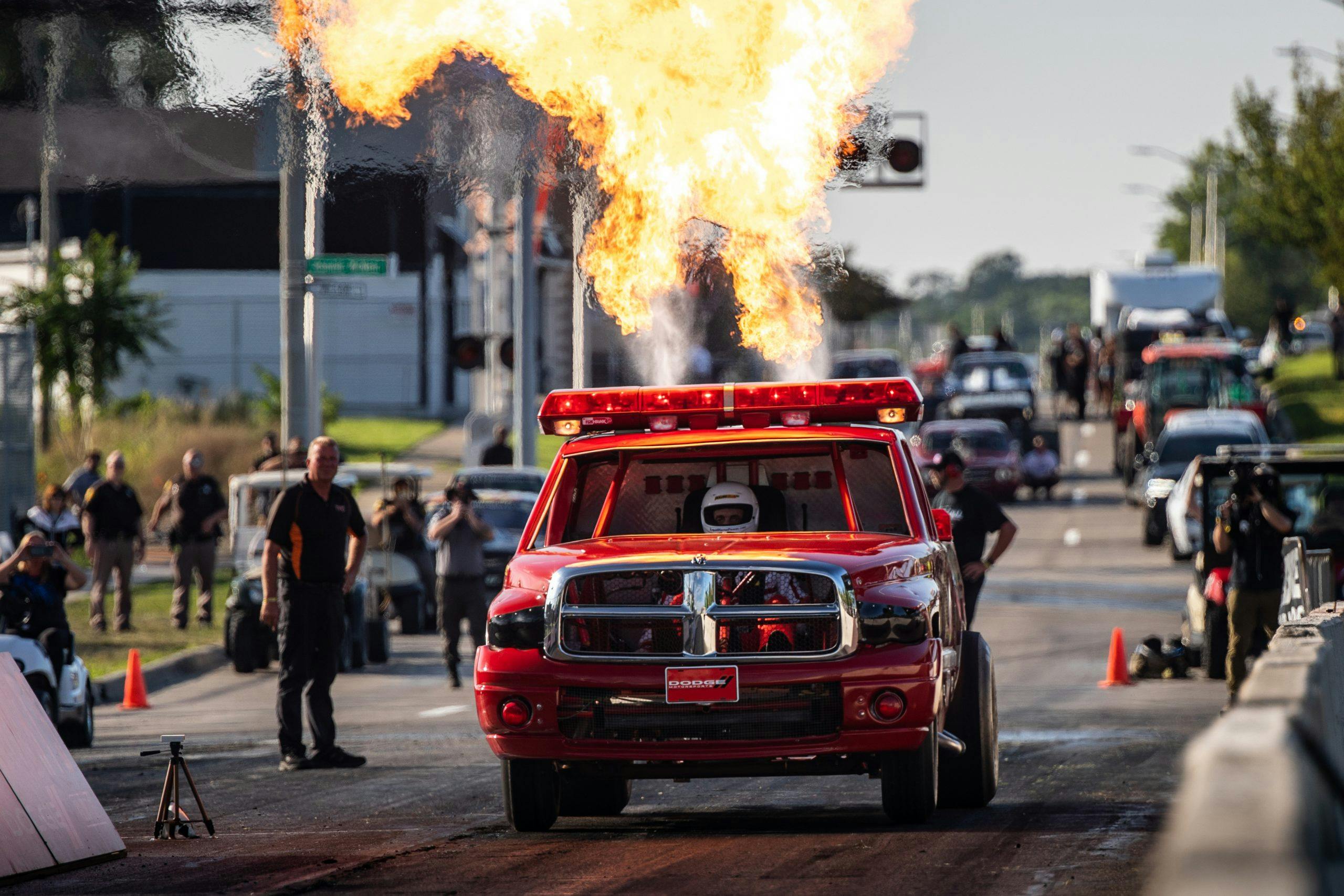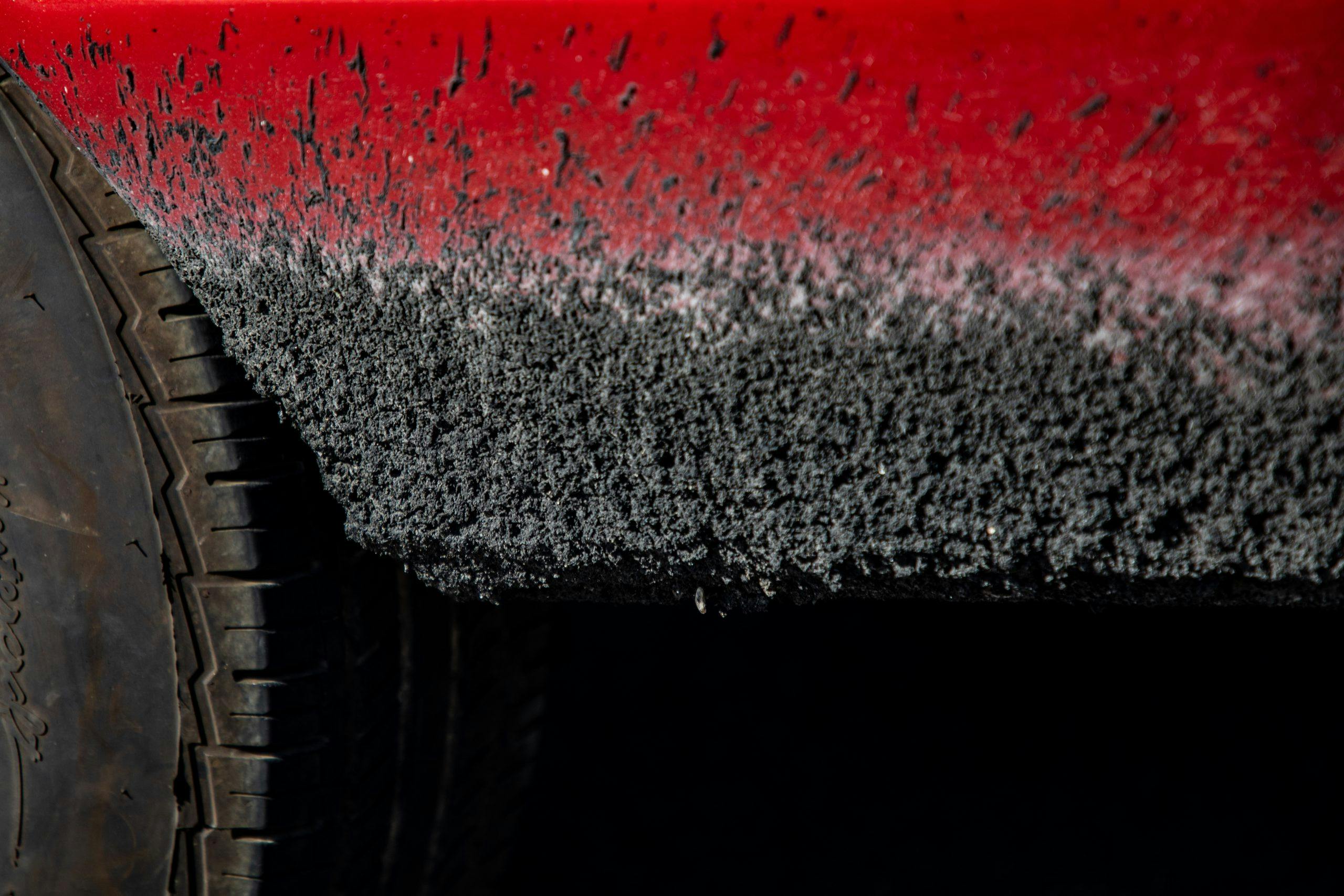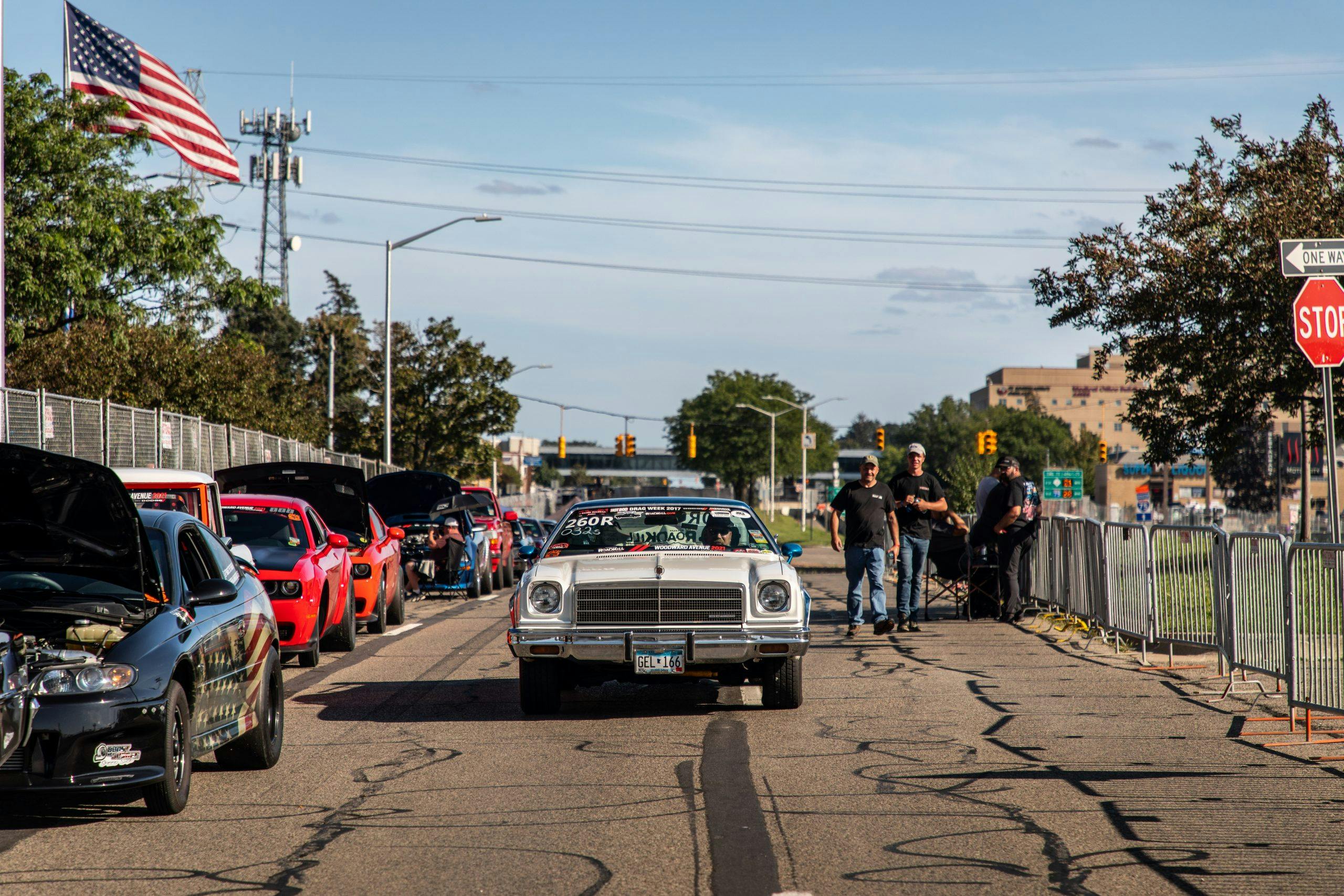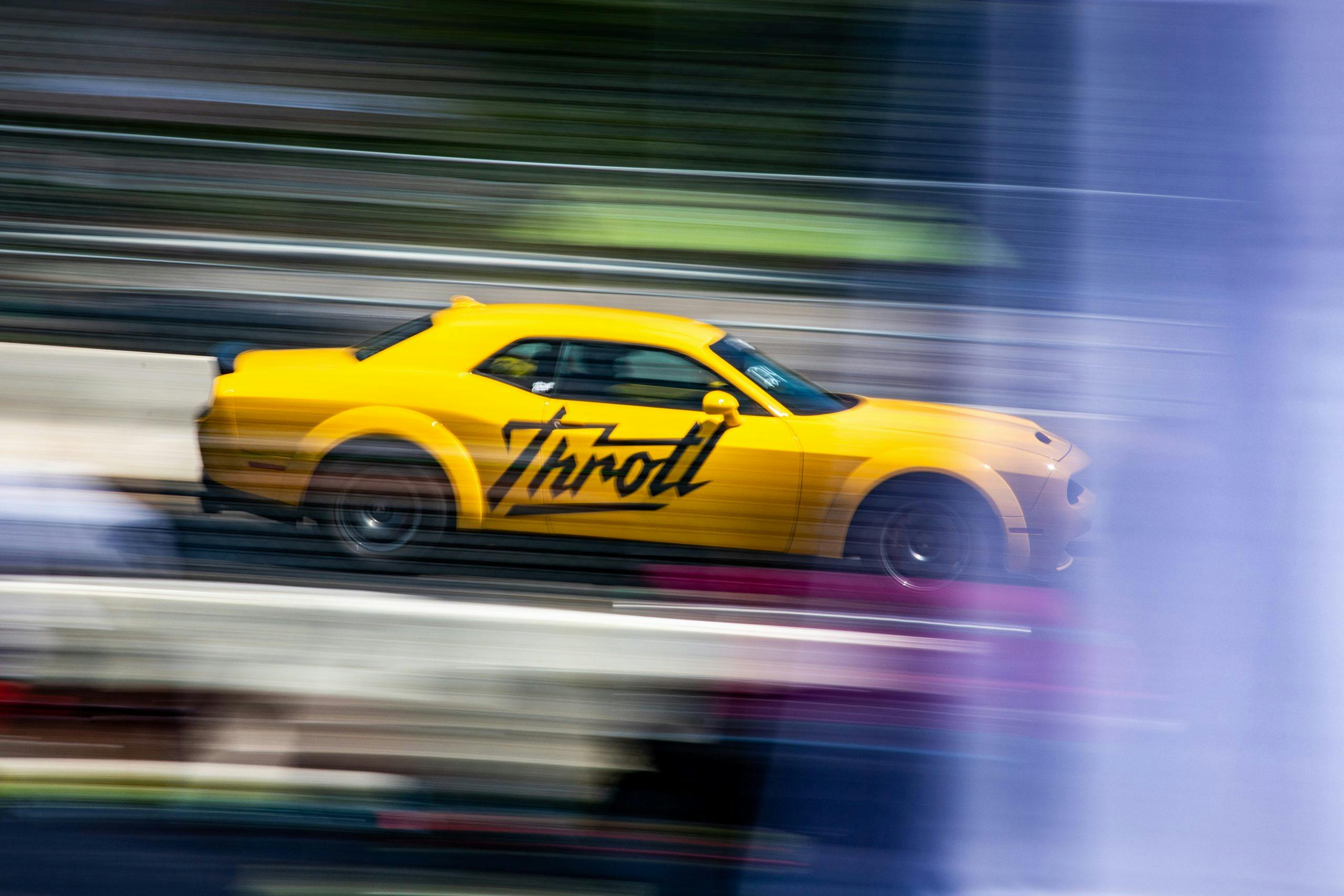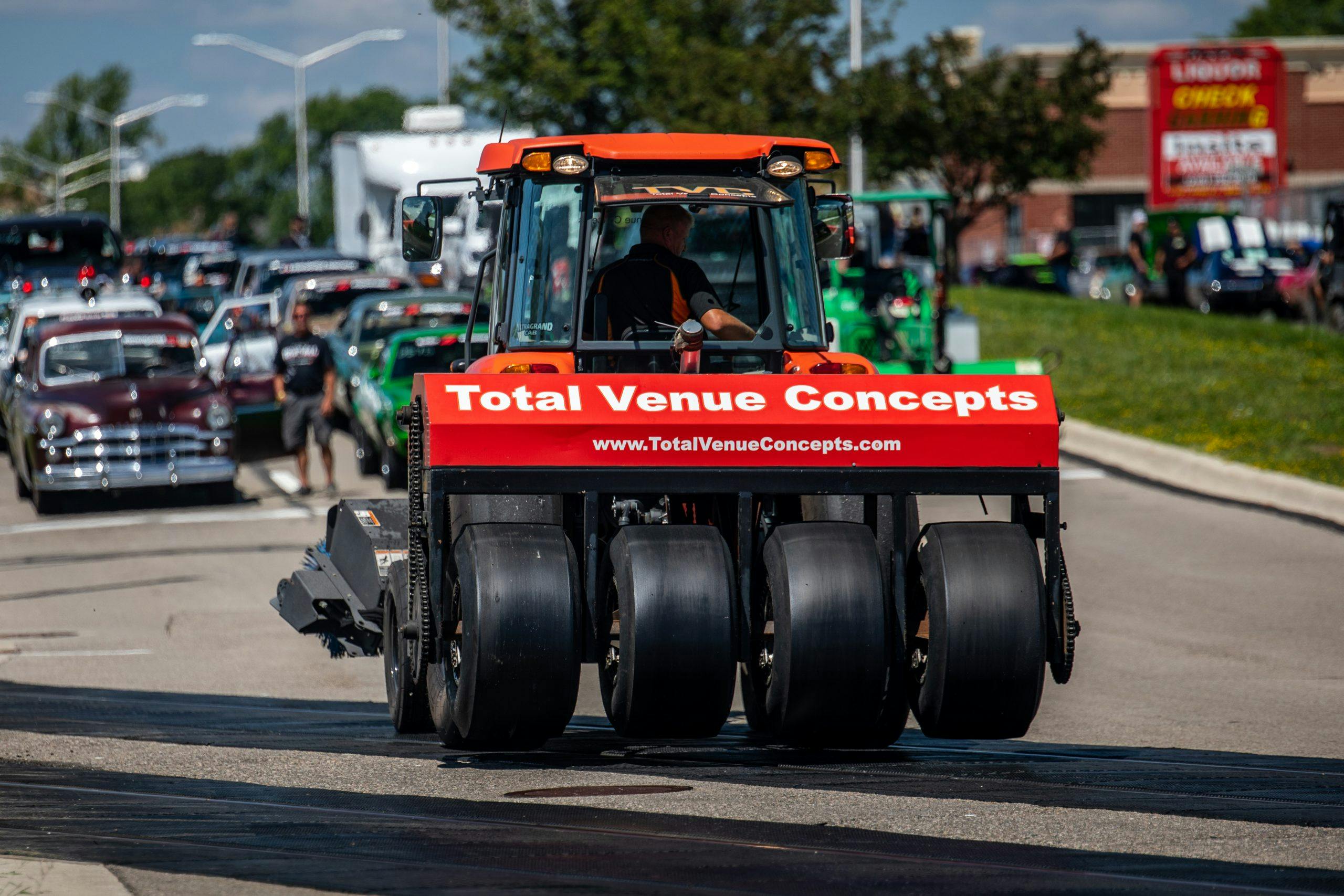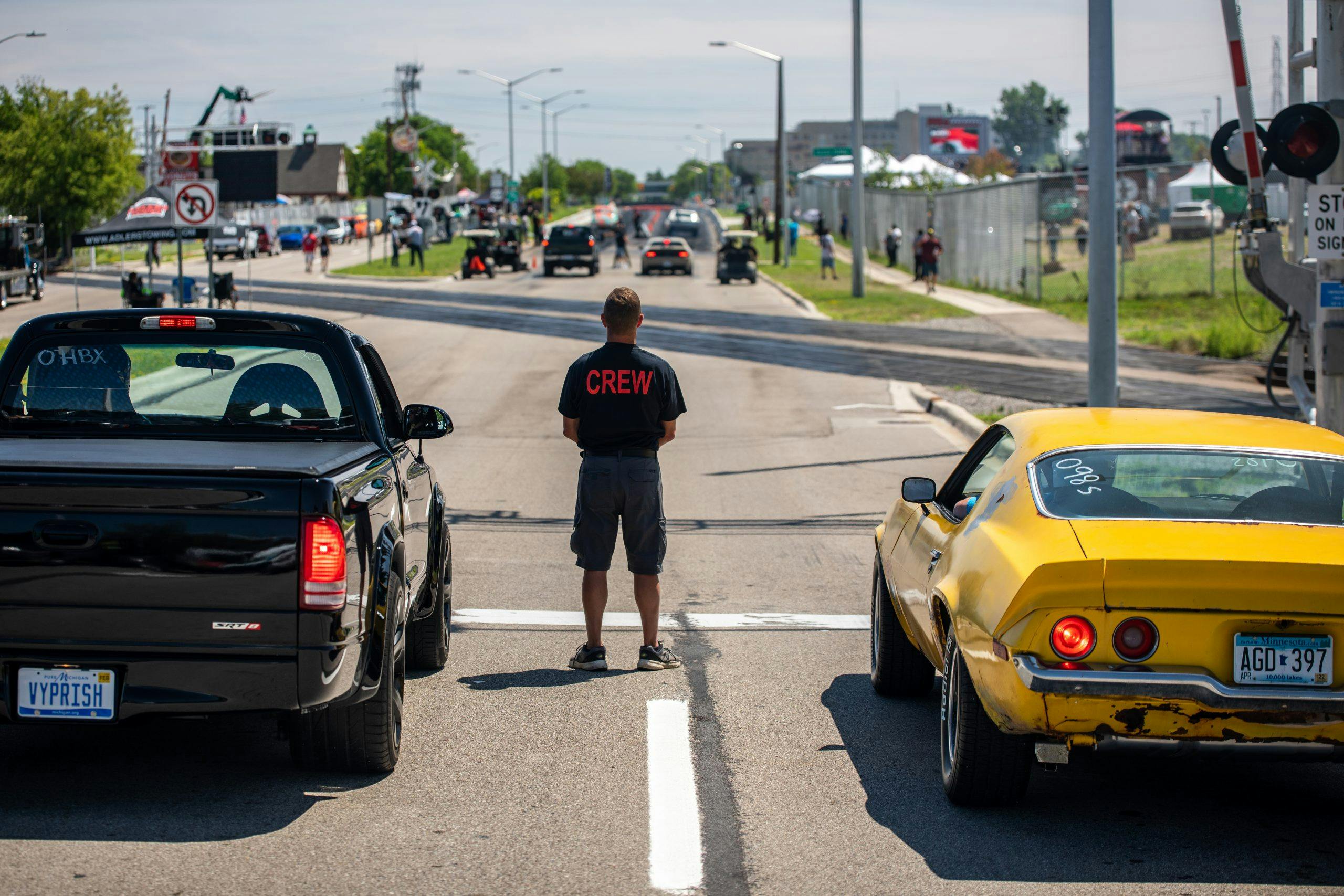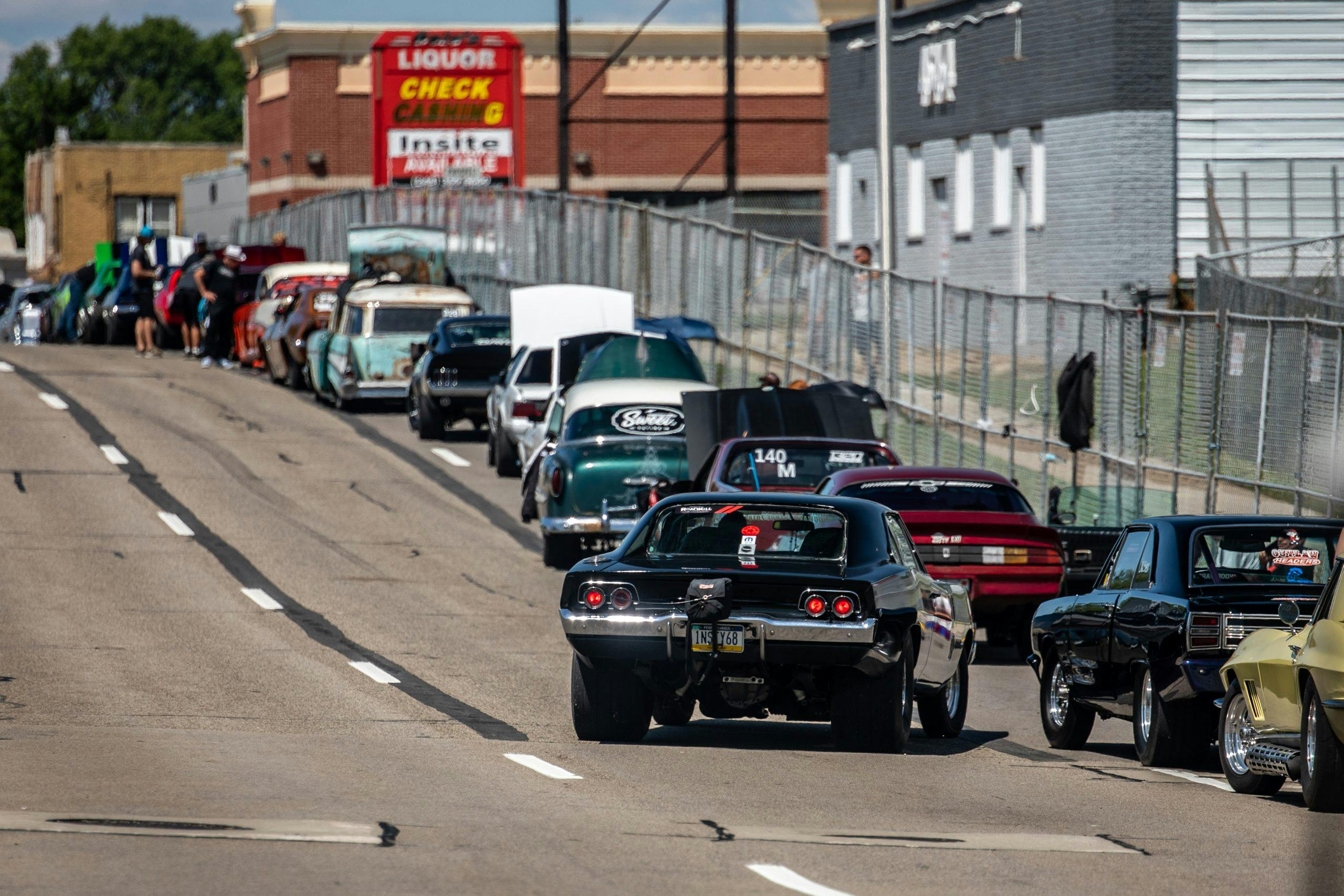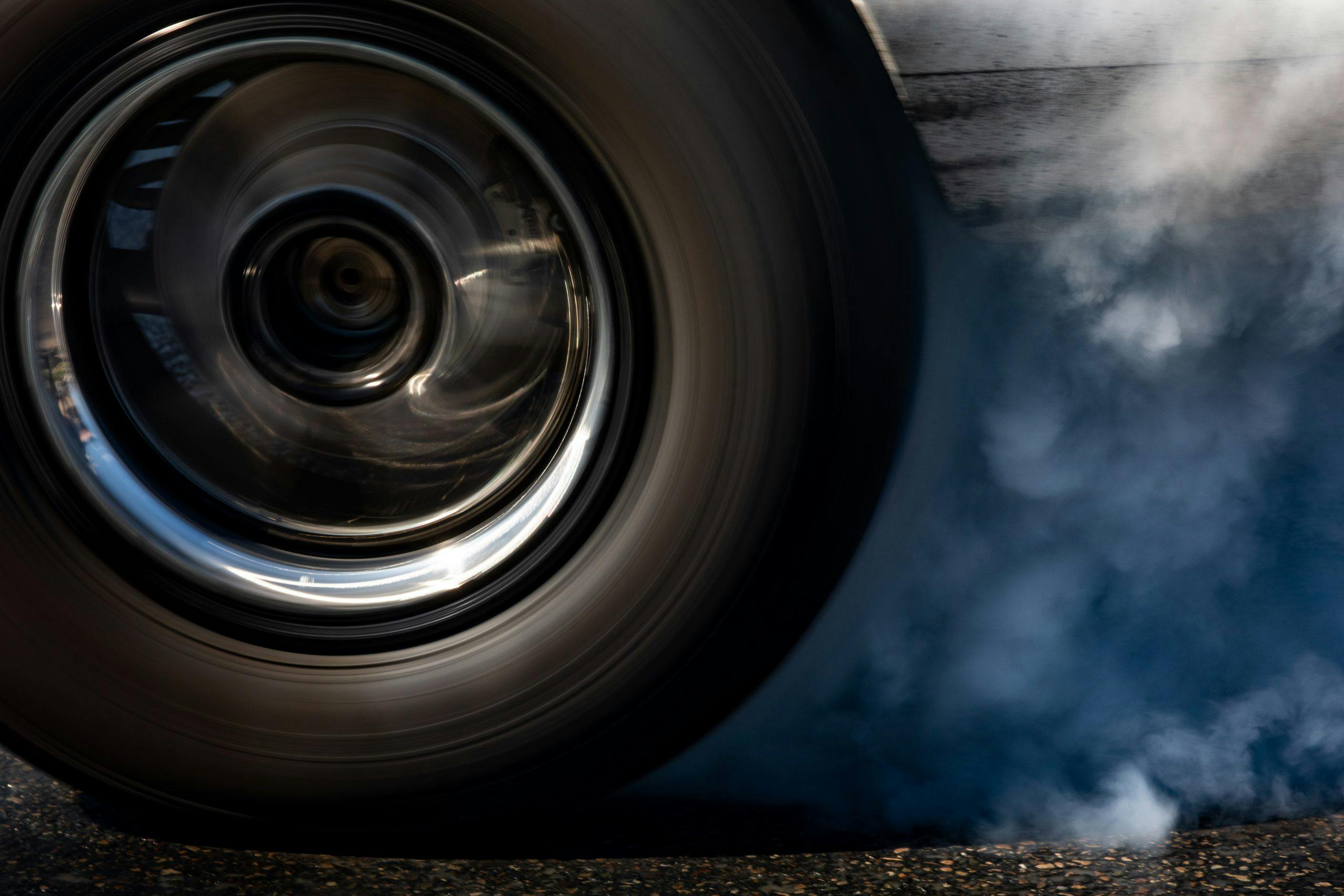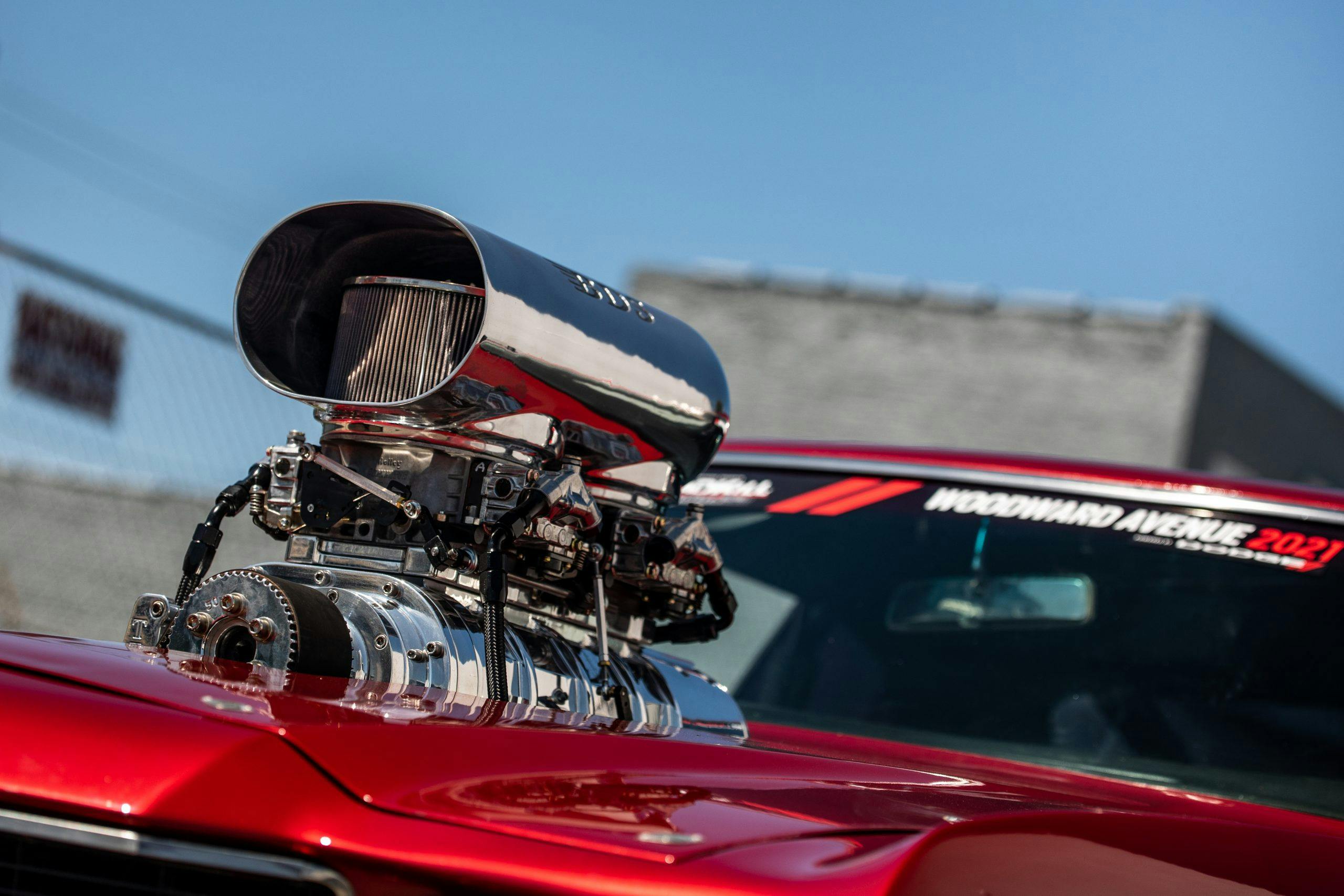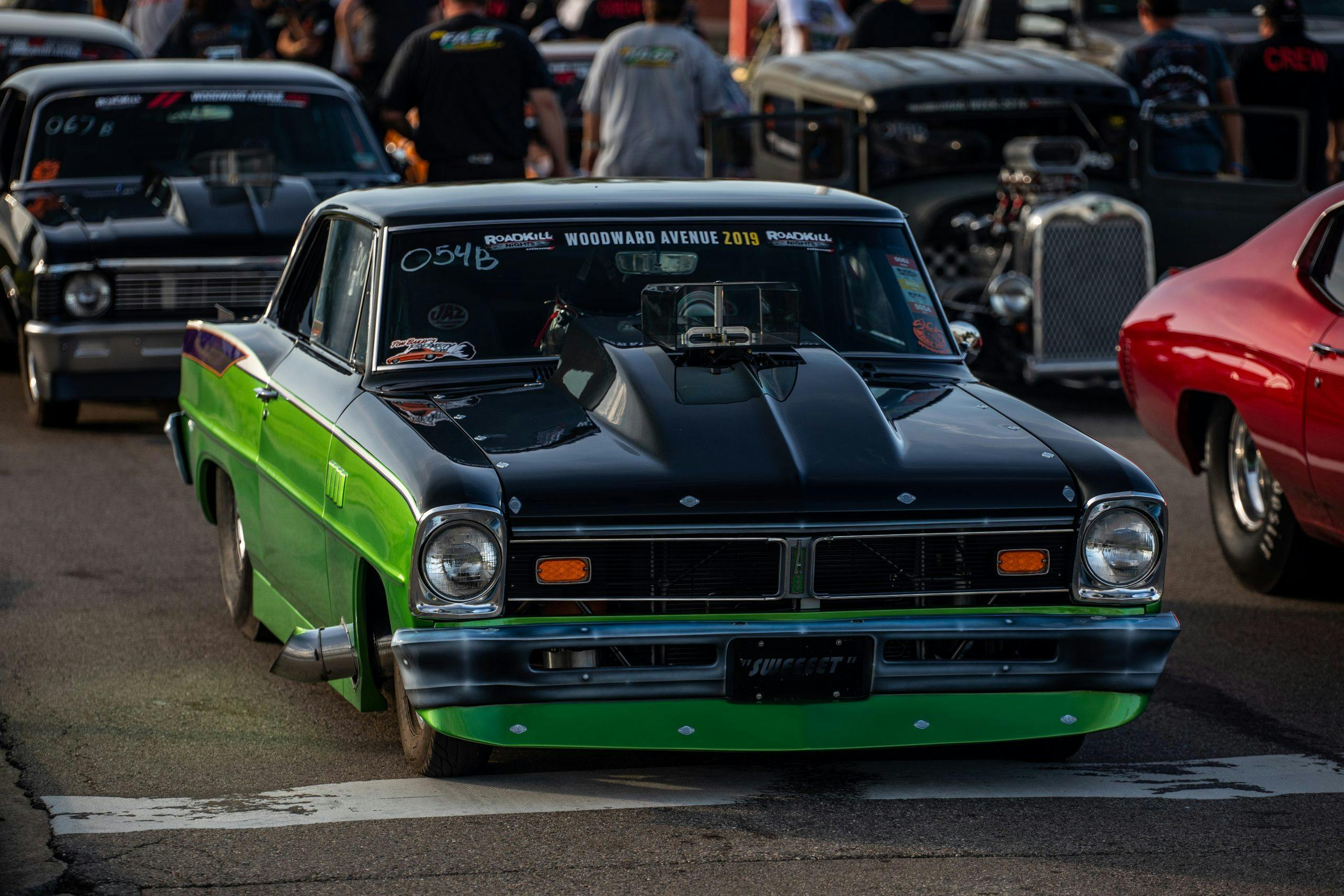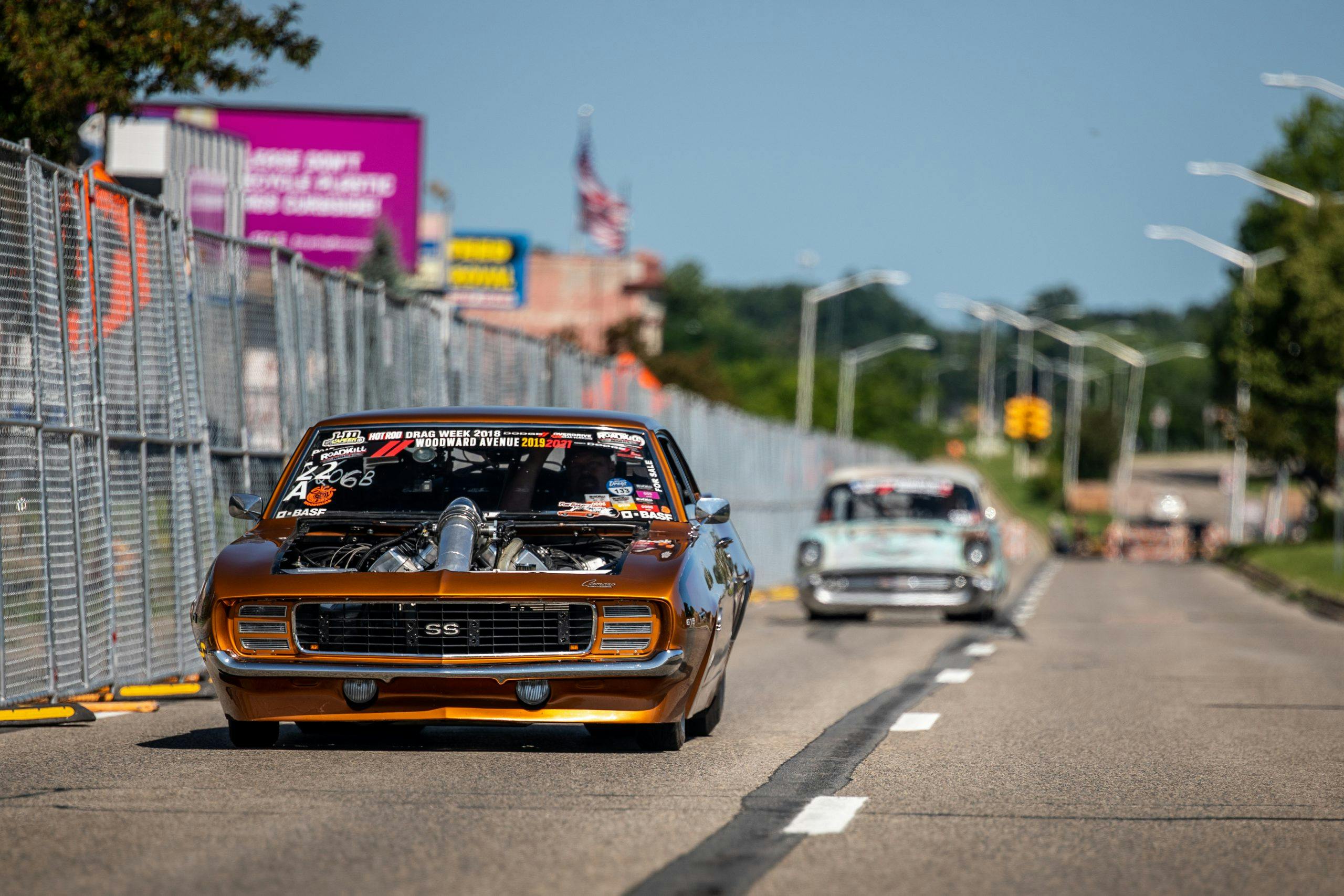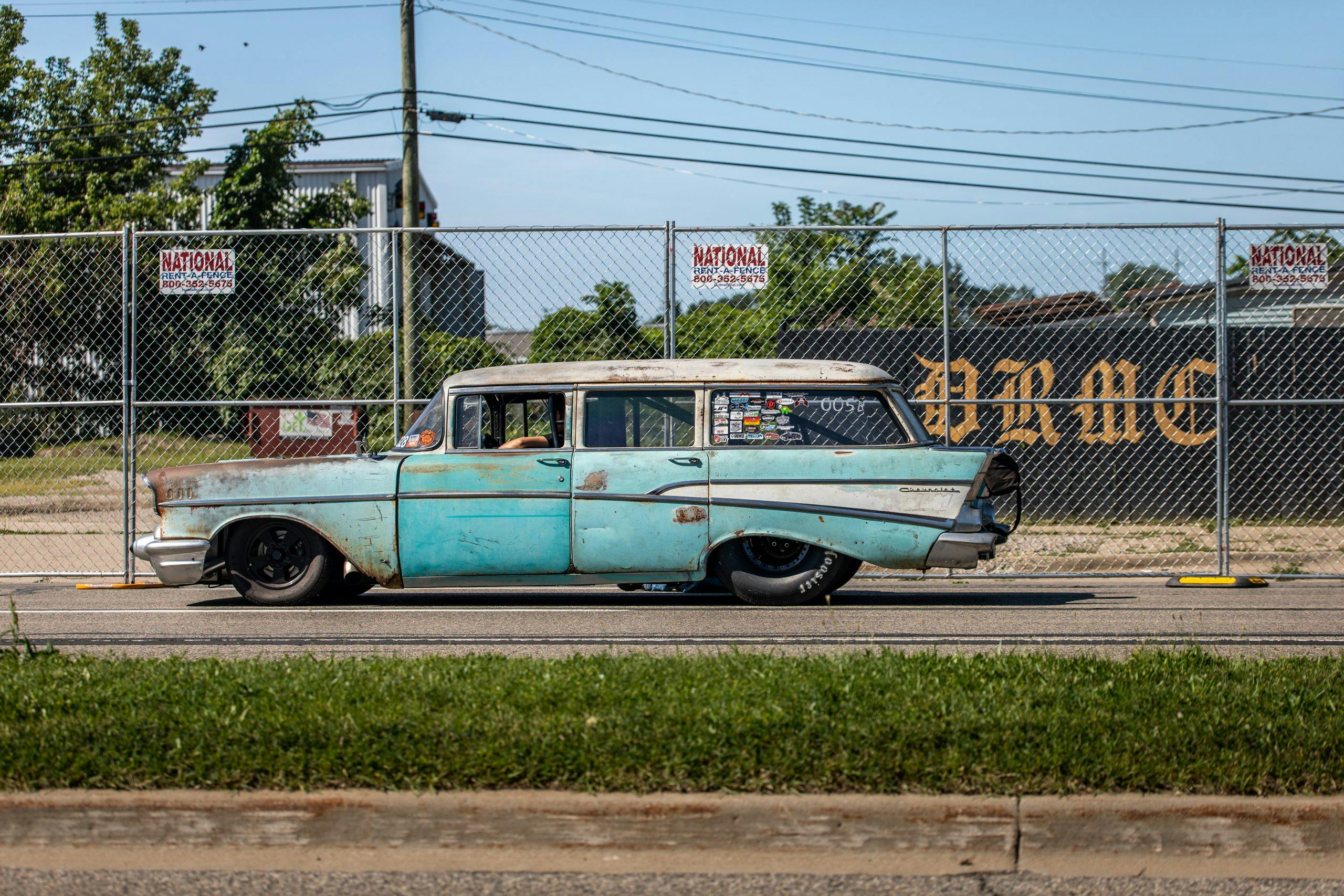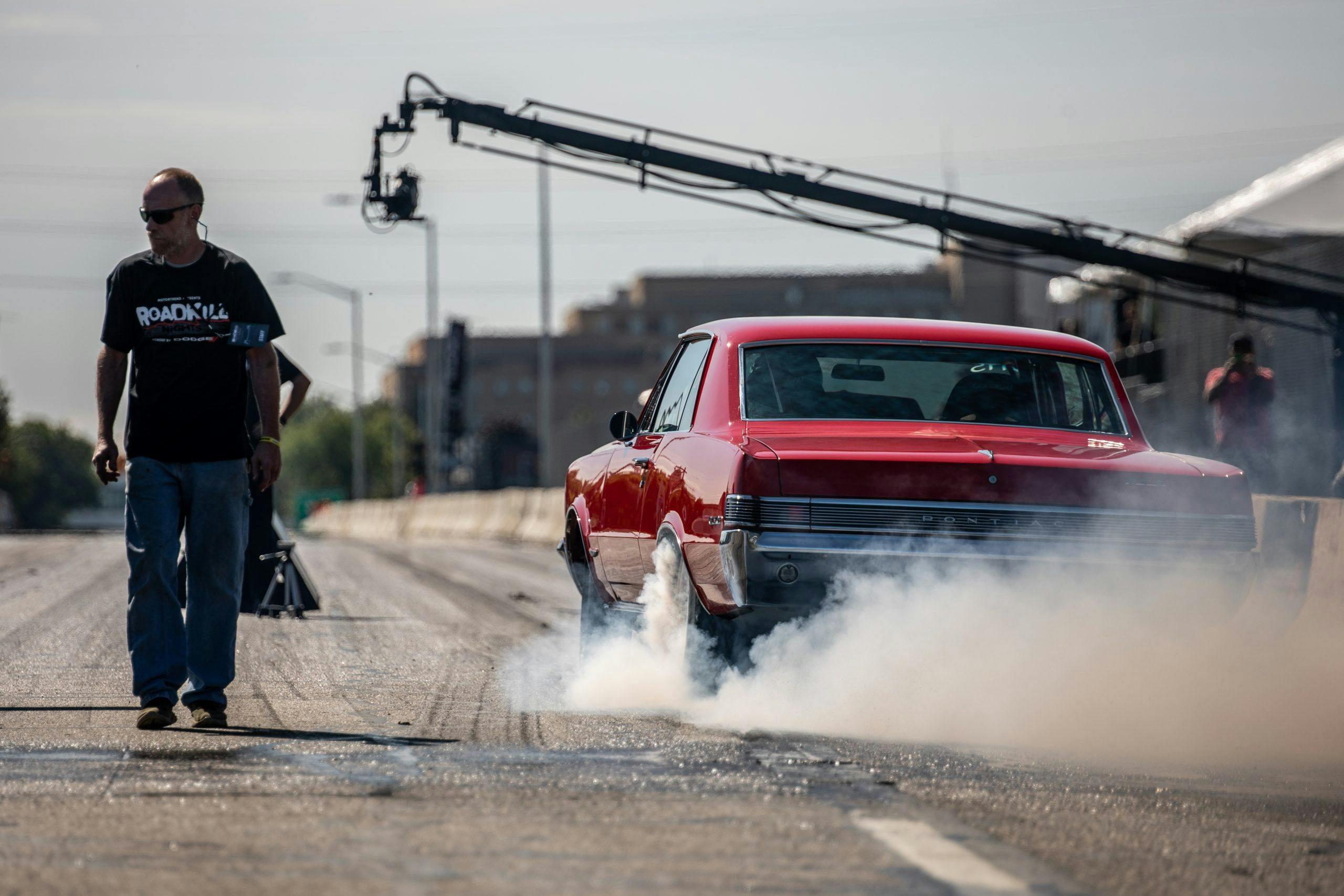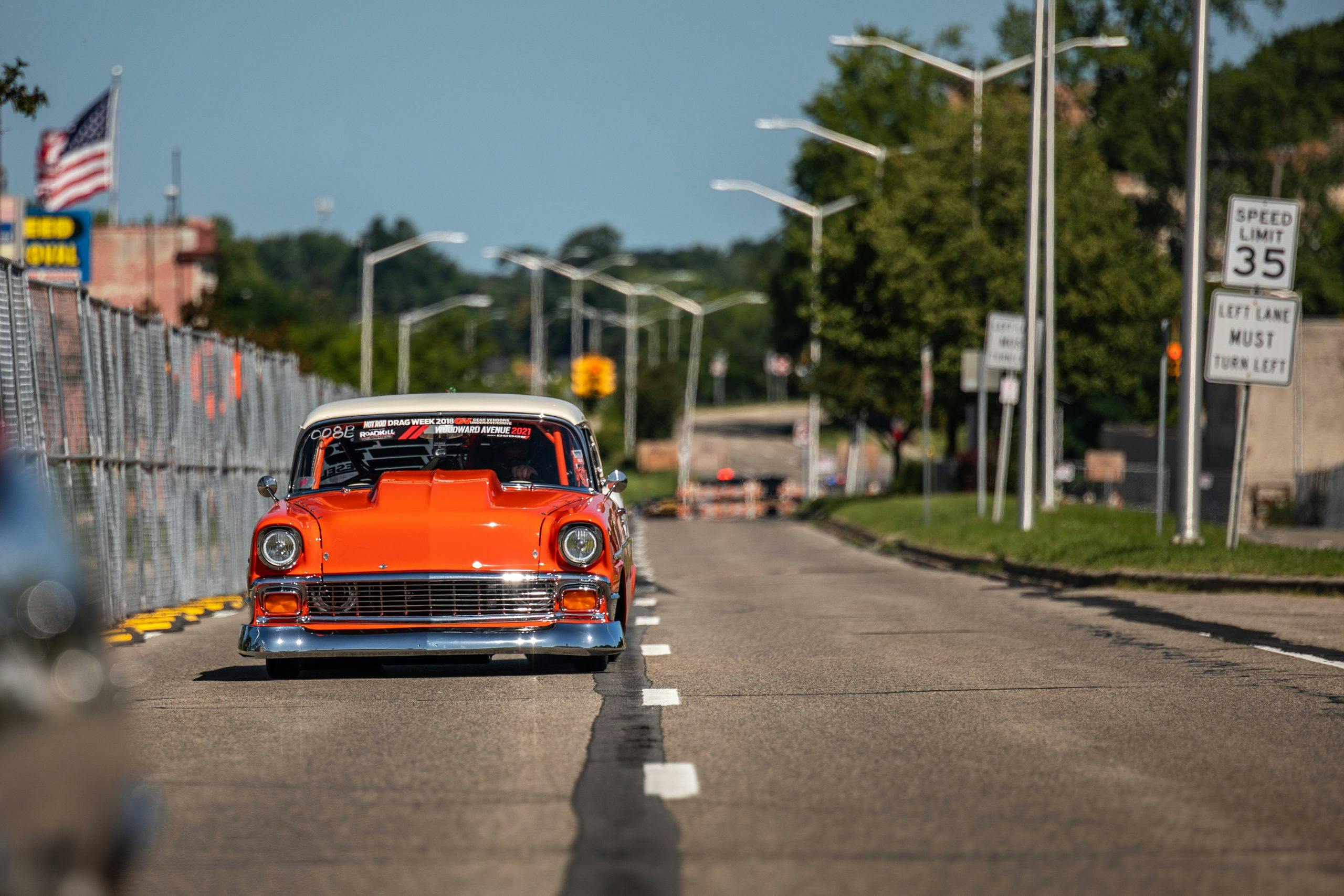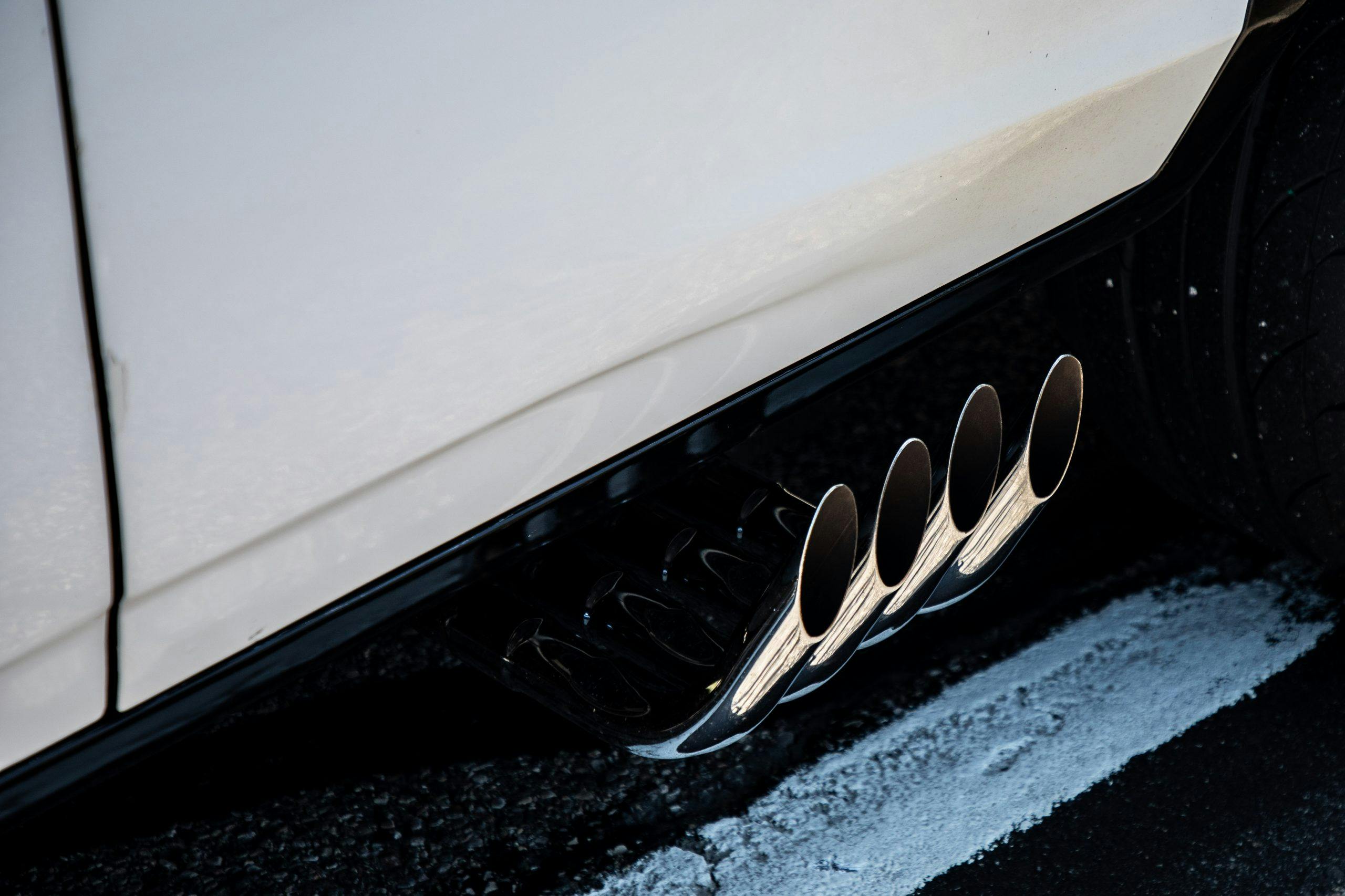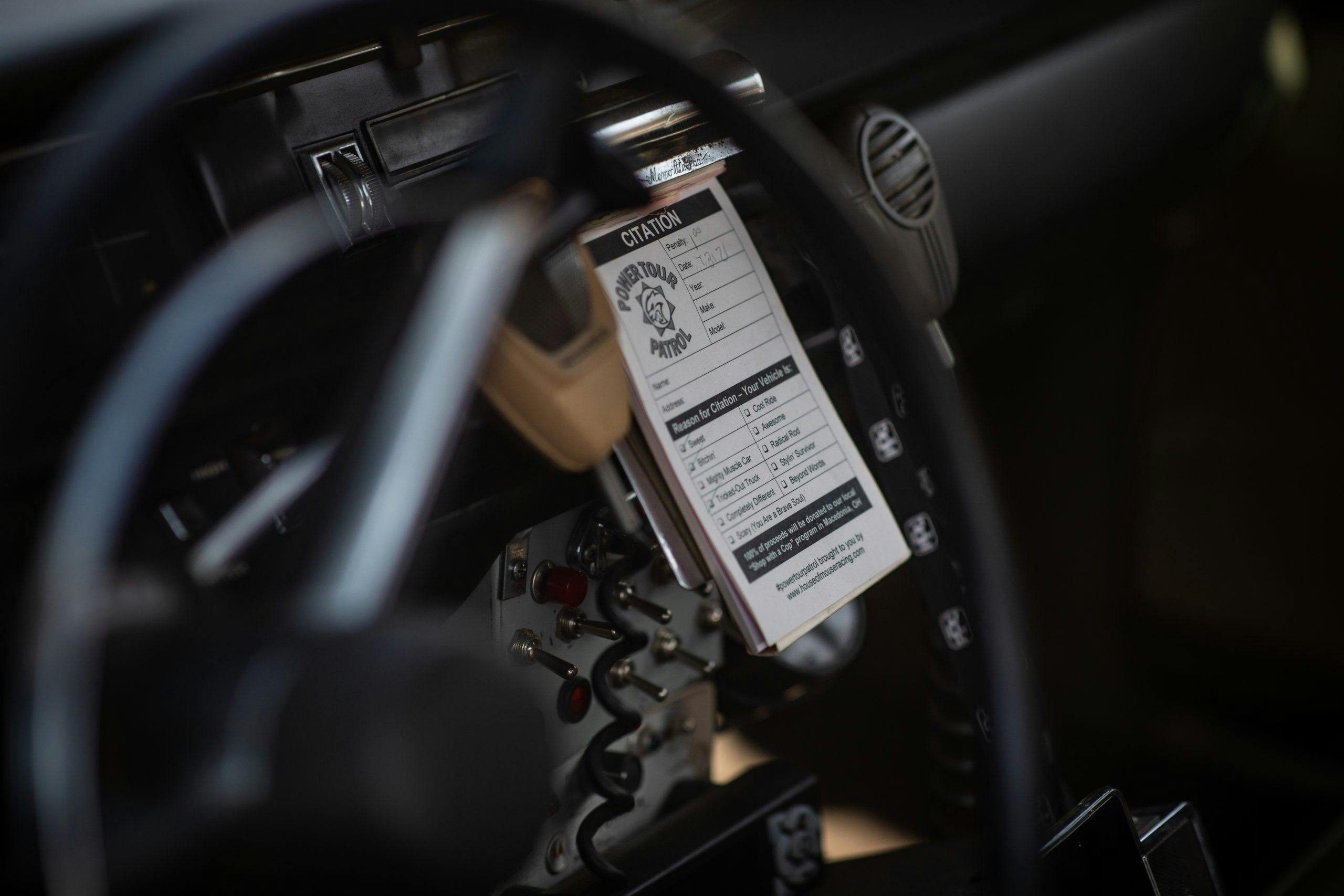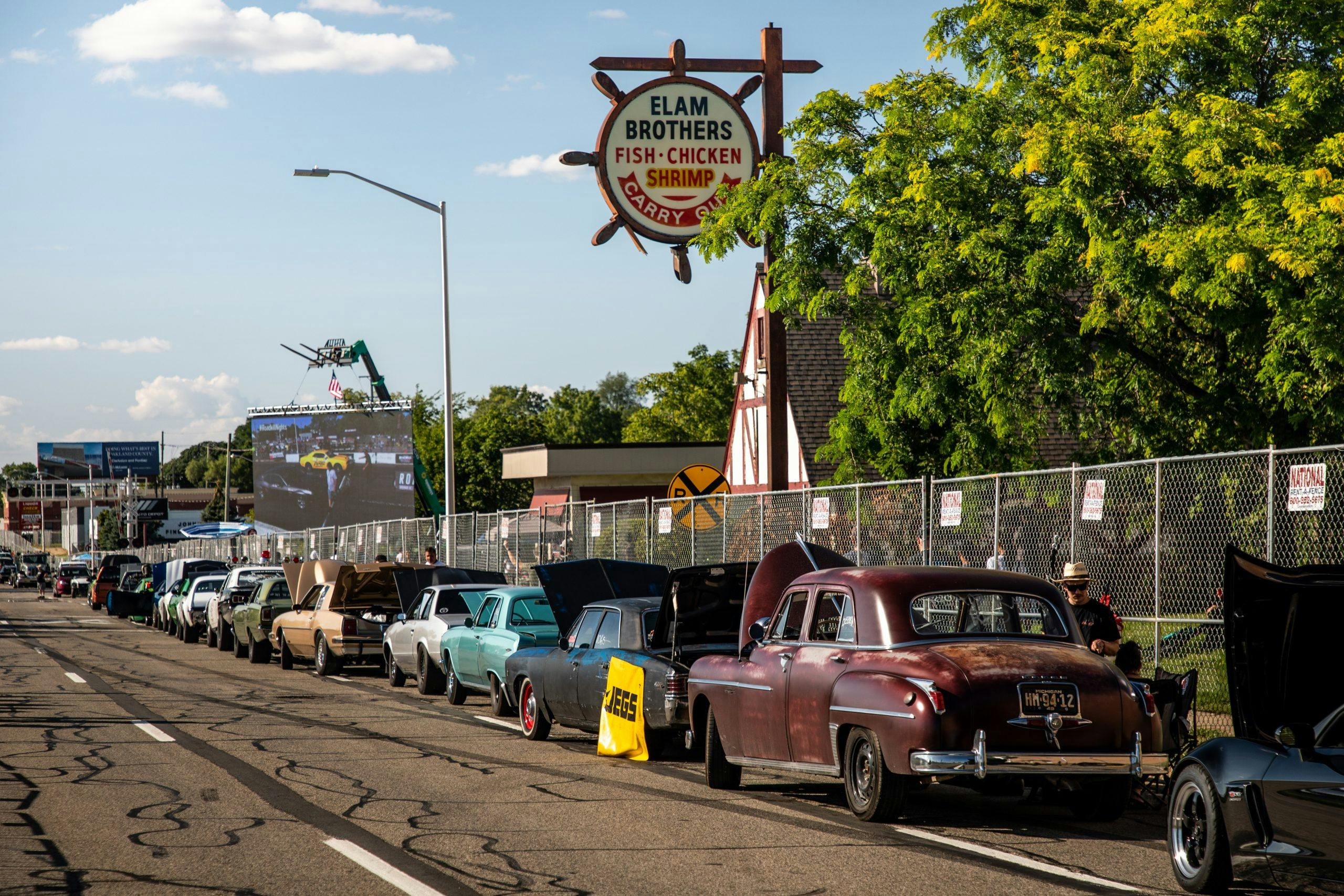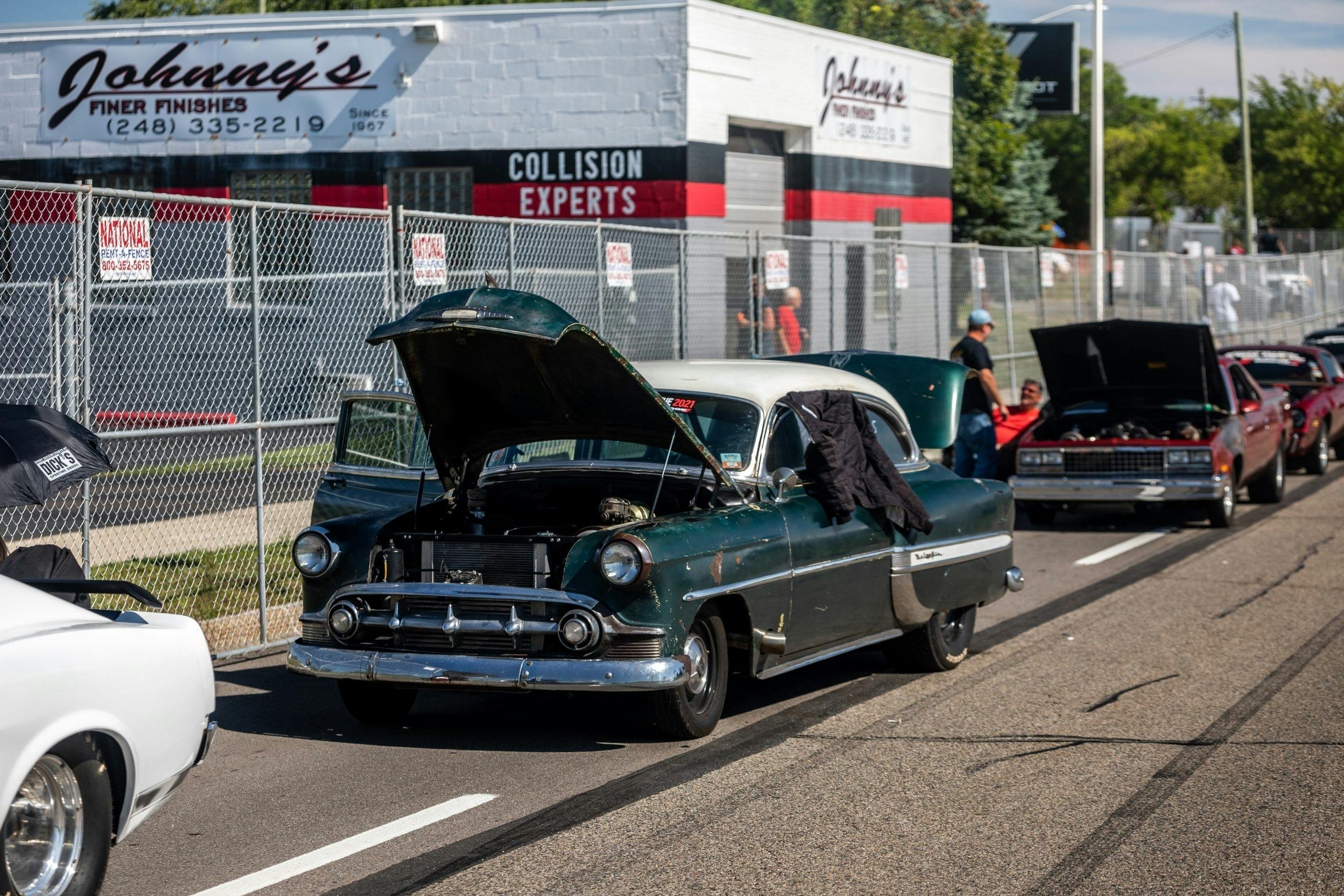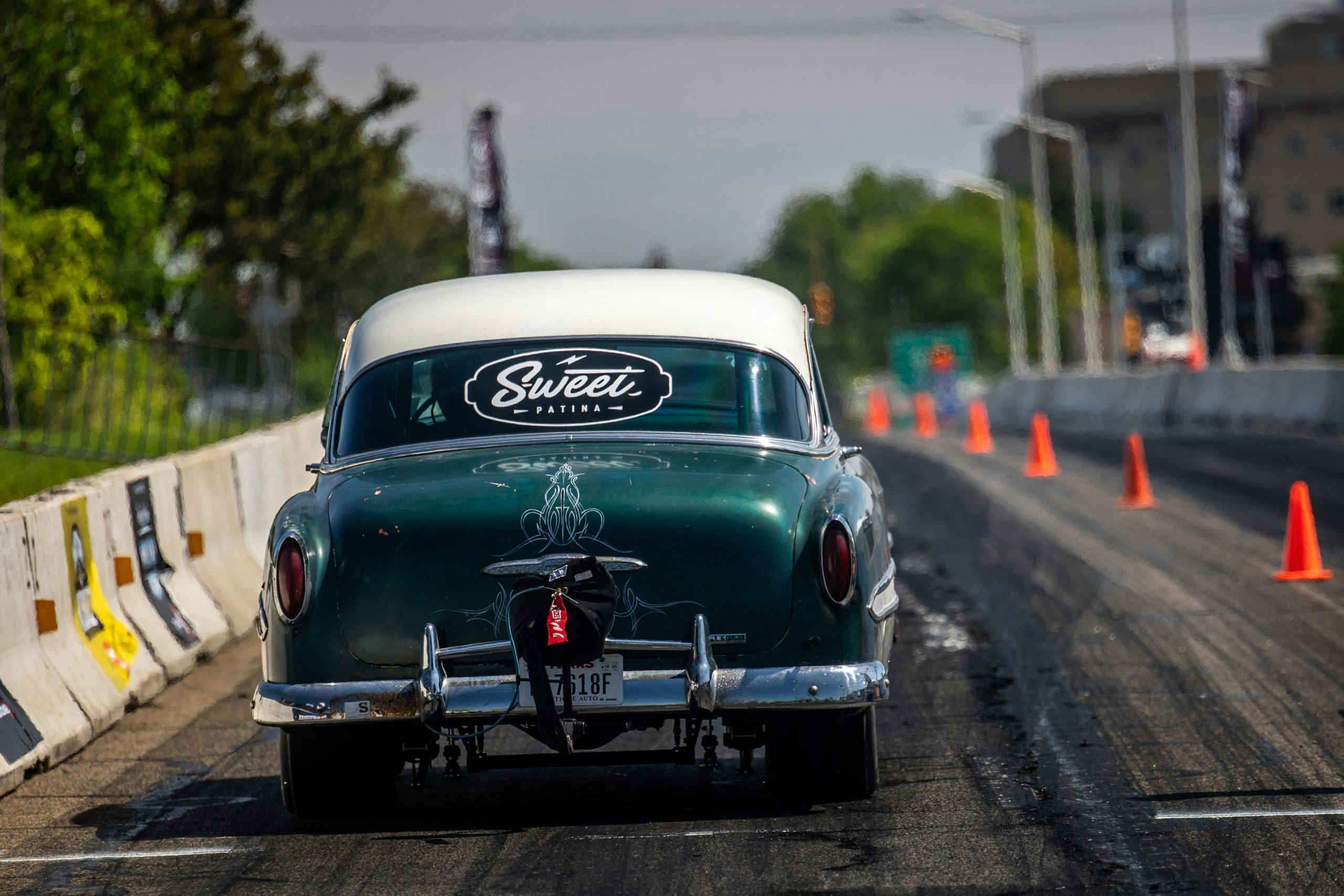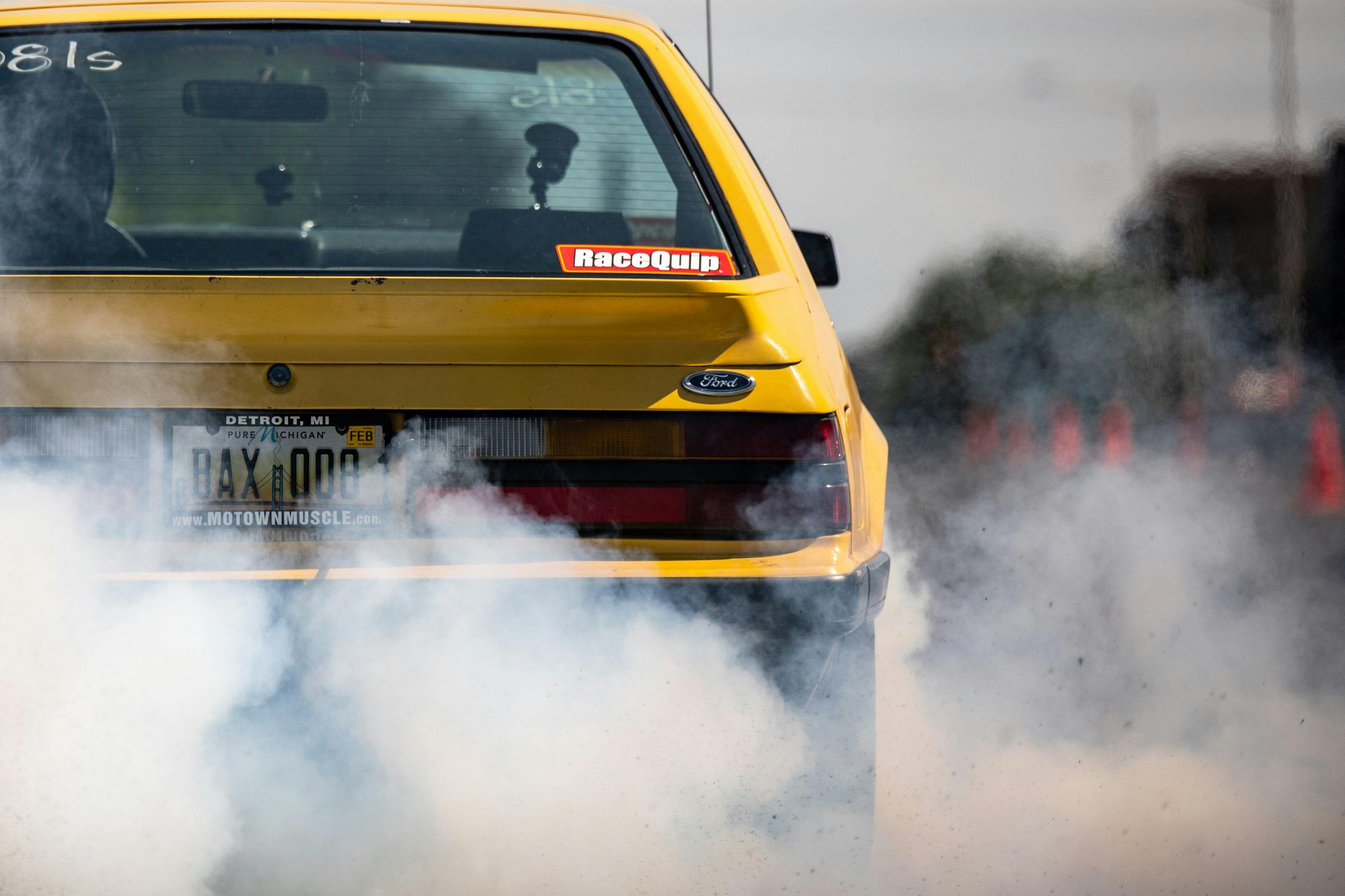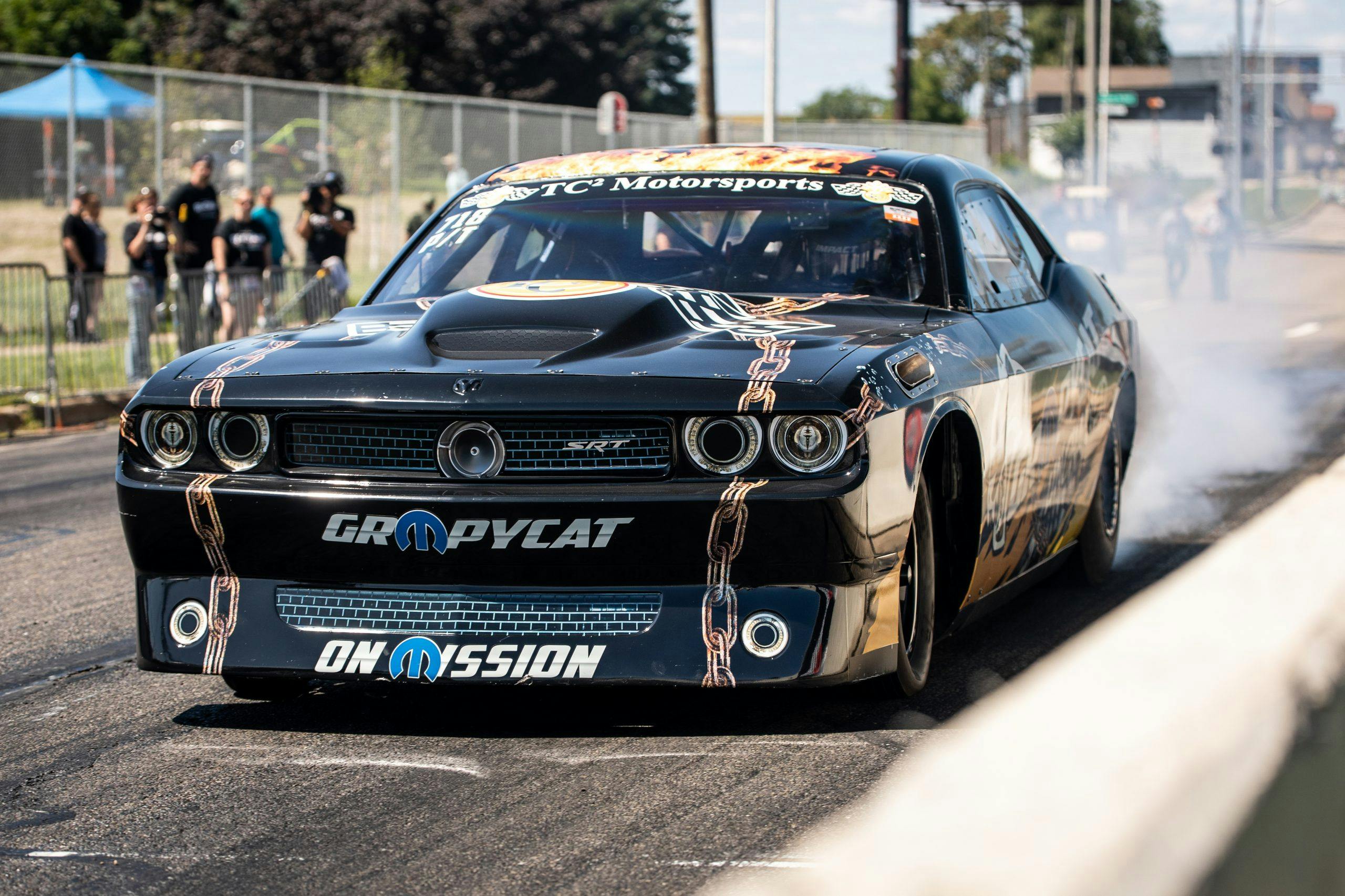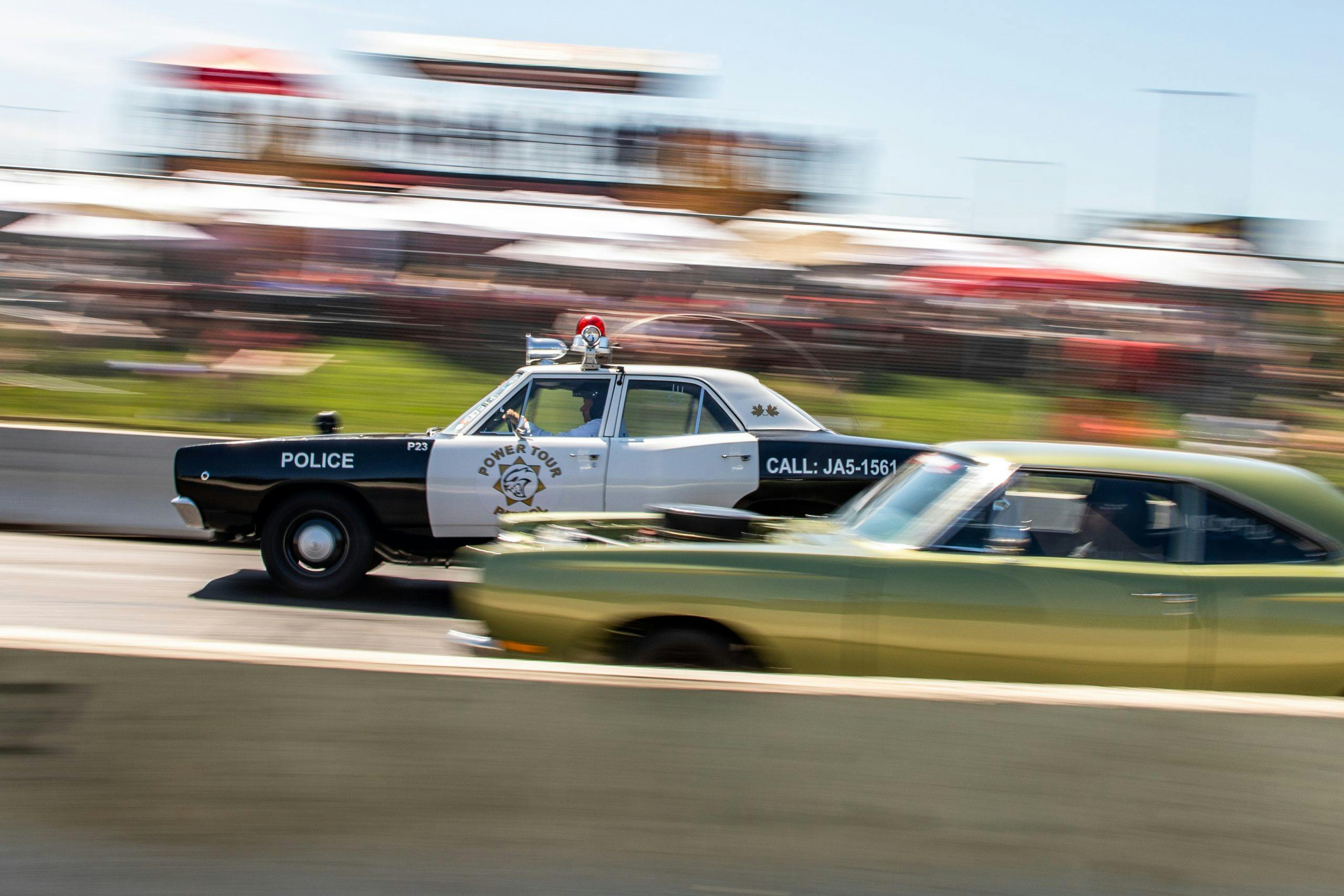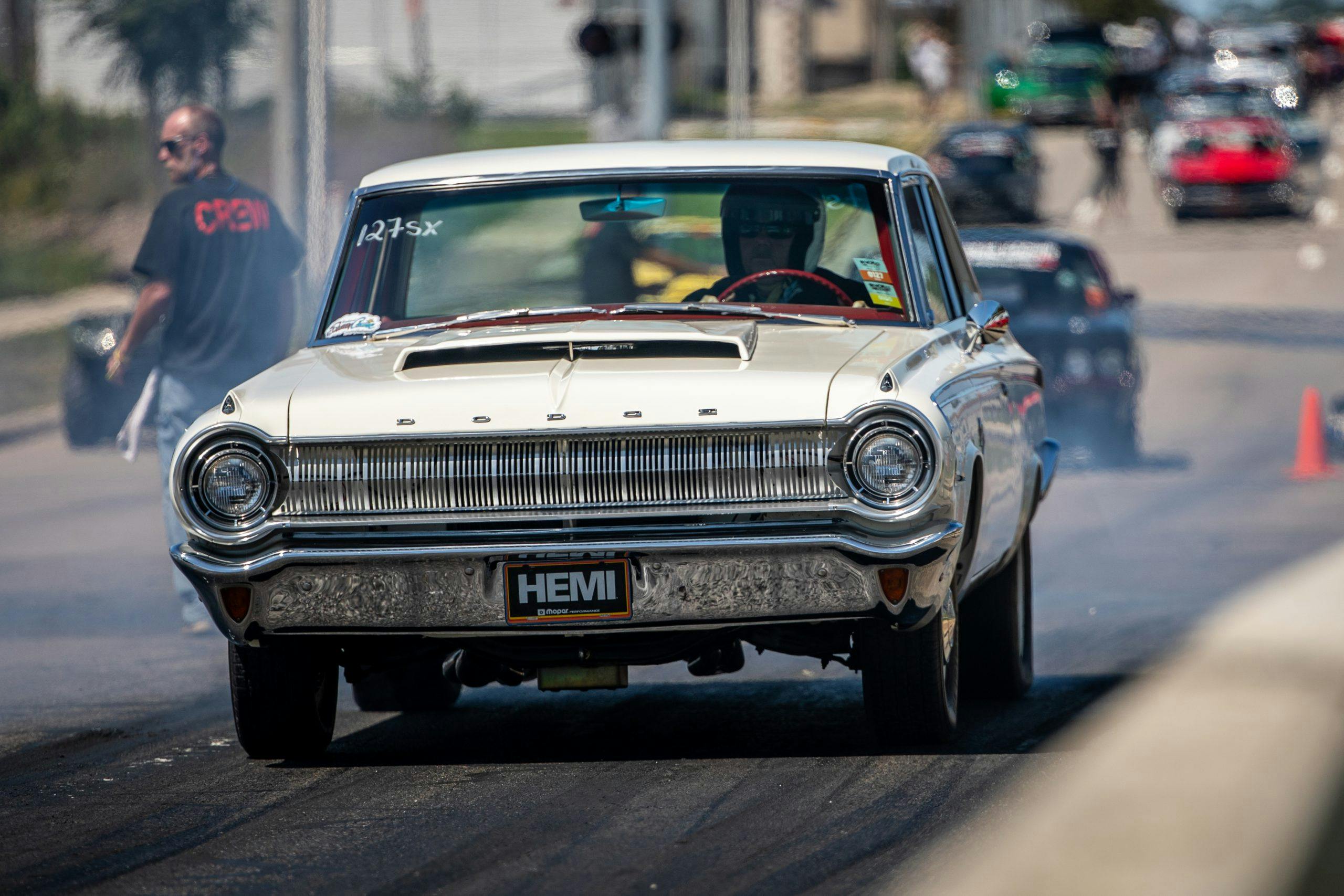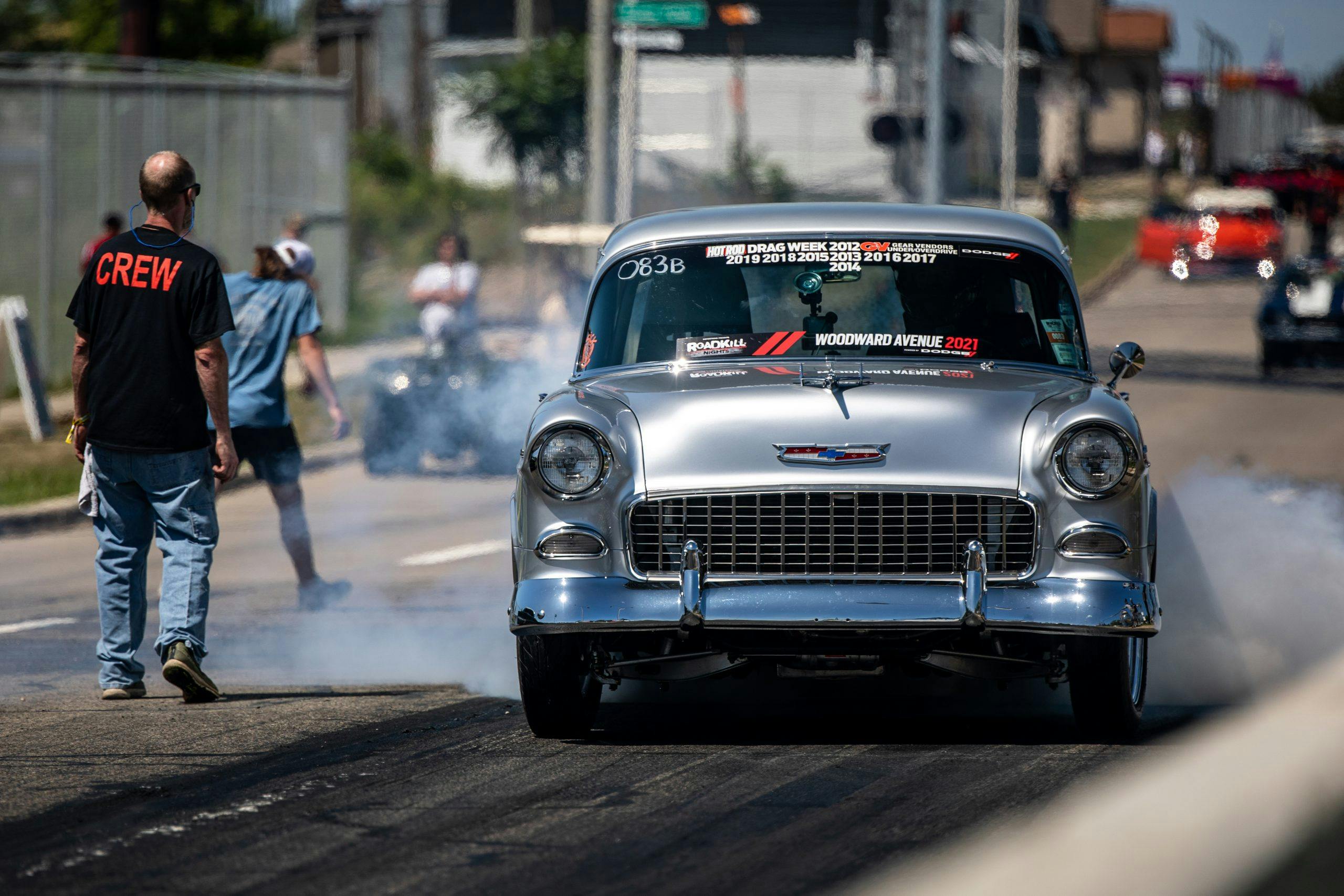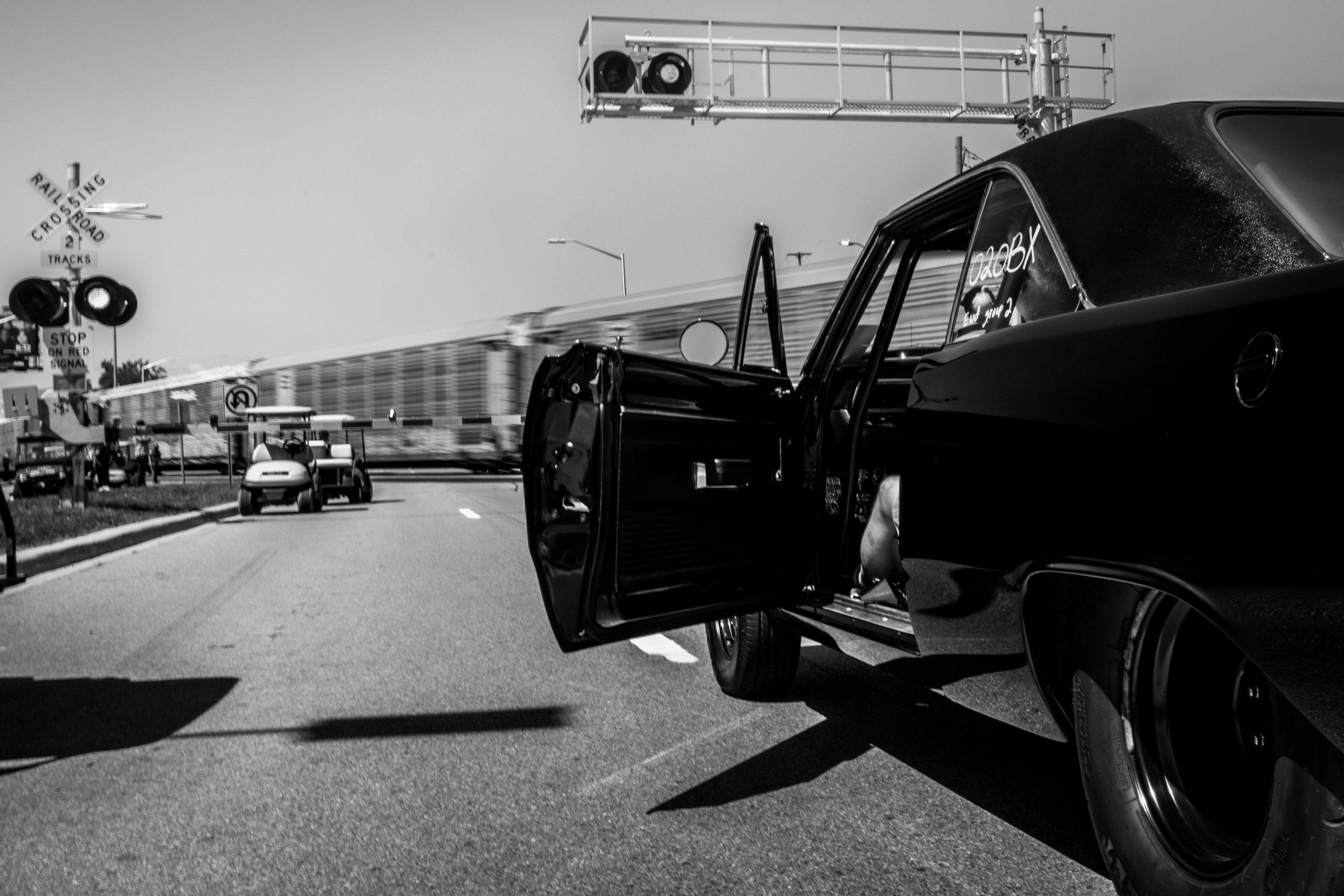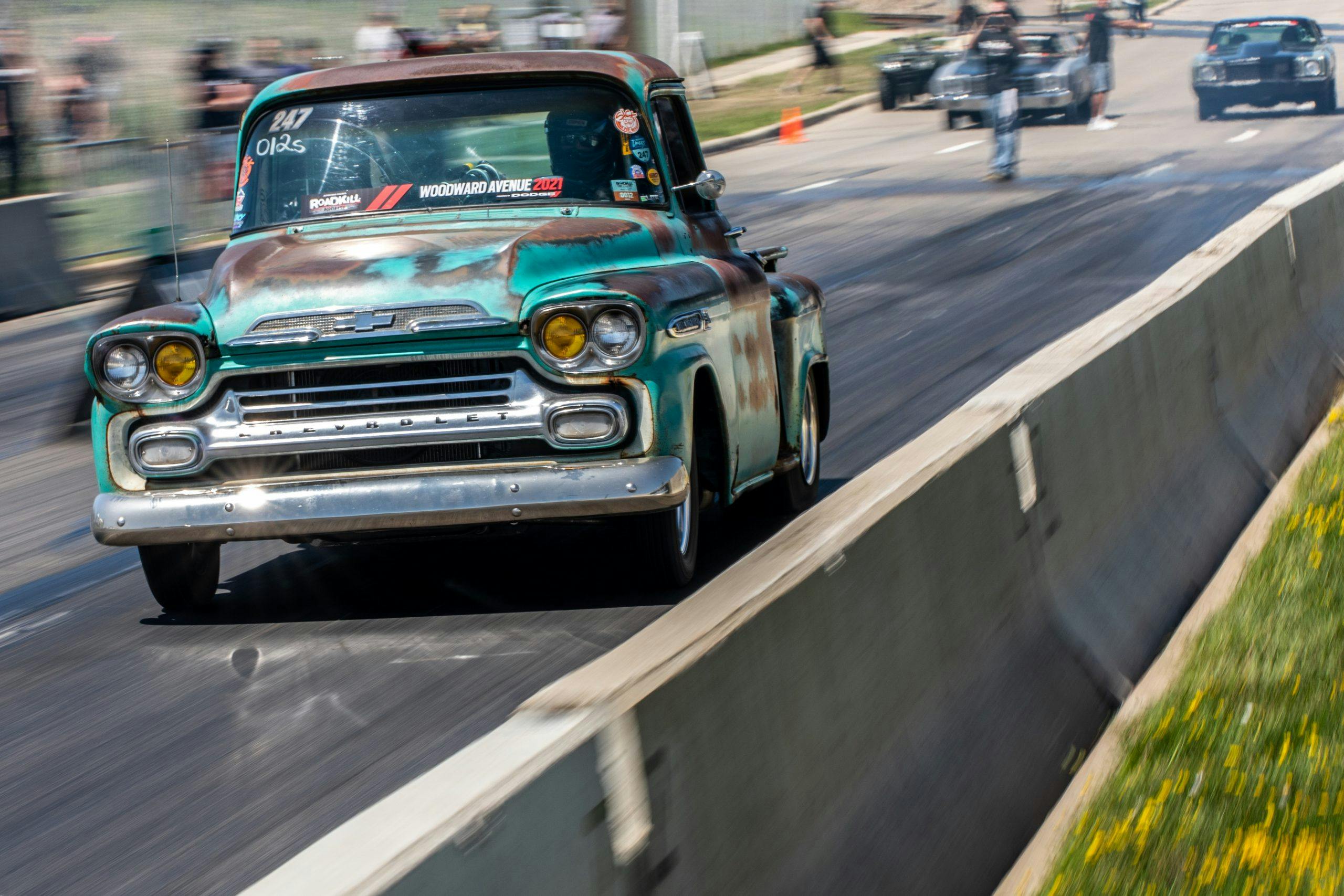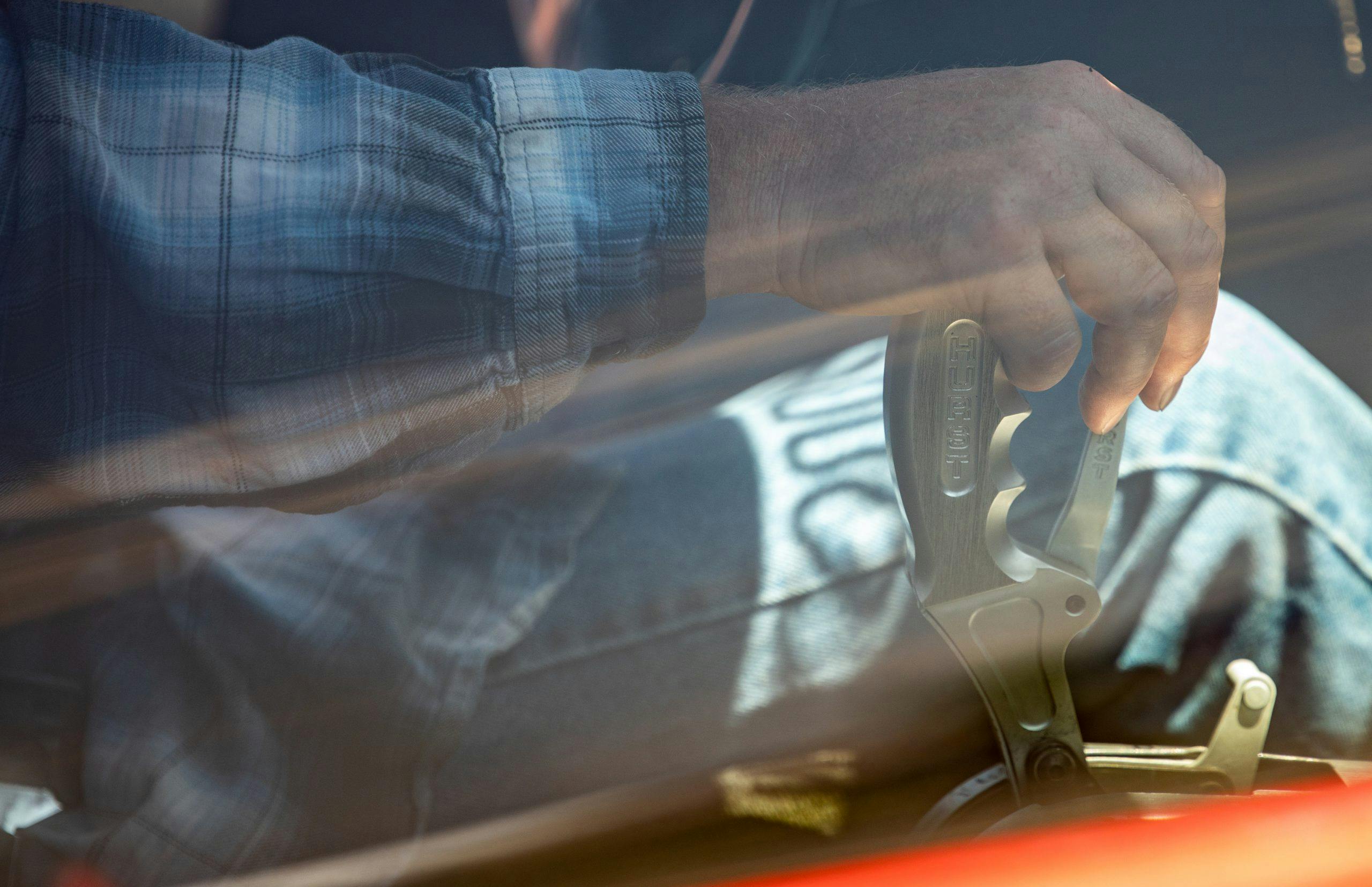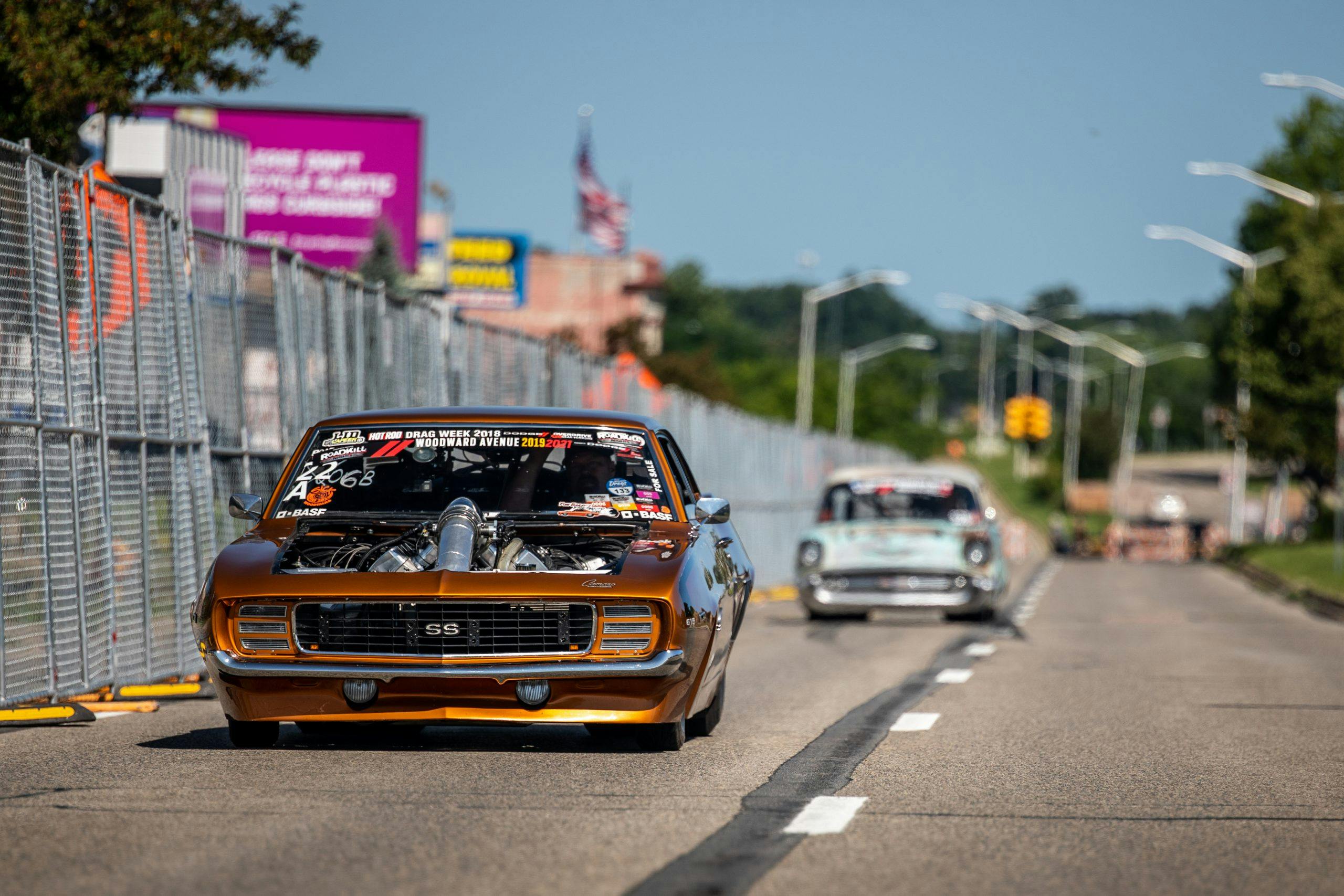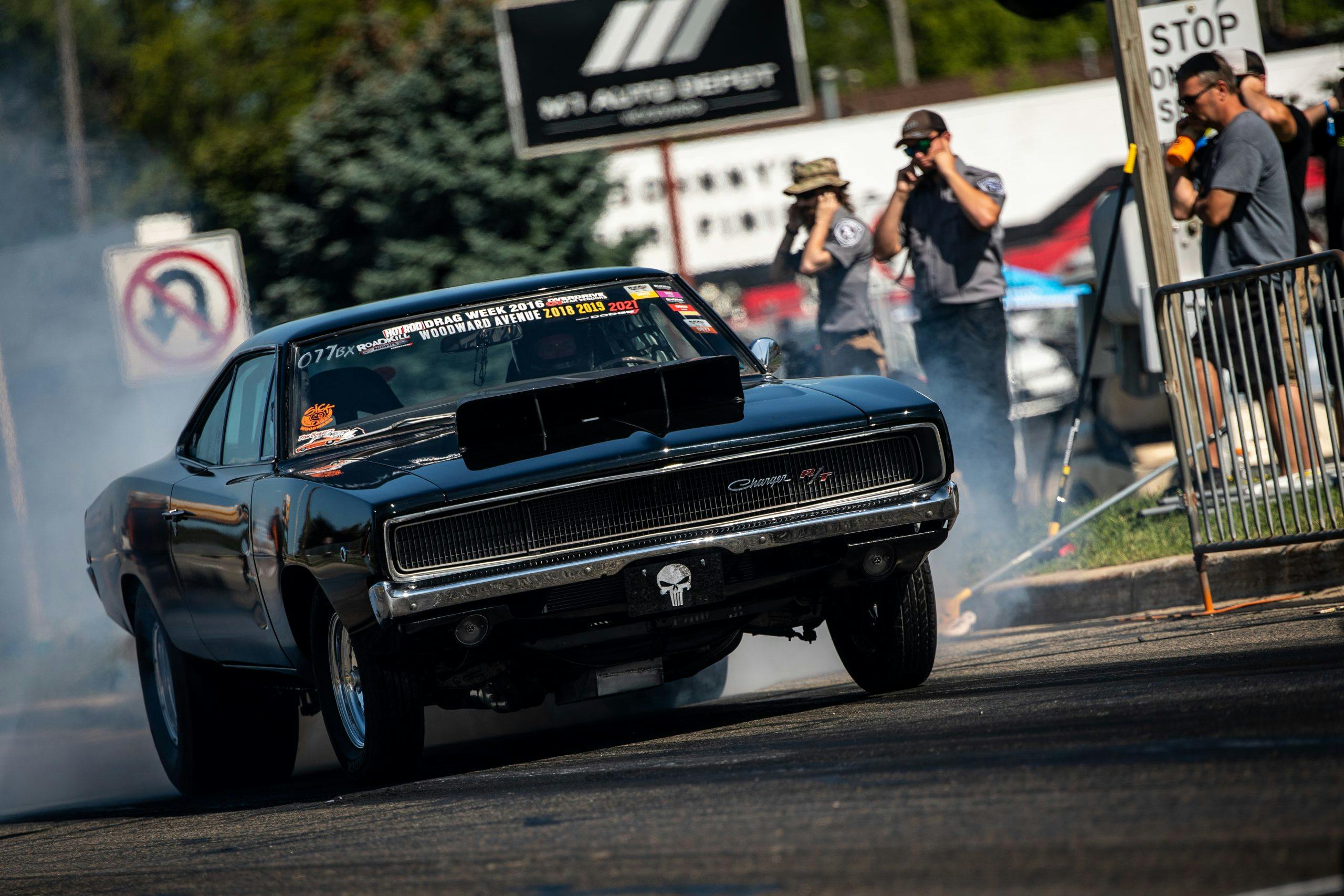Media | Articles
Roadkill Nights 2021: Detroit’s drag-racing heart is pumping strong
“Want some shade?”
The shadow of his first-gen F-150 Lighting is just wide enough to accommodate the clean-shaven Army vet and his low-slung folding chair. I take him up on the offer, leaning my back against the red, rubber-splattered sheetmetal and parking myself on the pavement of Detroit’s Woodward Avenue. Behind us, an August sun beats down on a crowd of 38,000 people, all gathered to watch the sixth (non-consecutive) year of Roadkill Nights— a festival of street-legal drag racing that’s become a staple of Dream Cruise week.
This very same weekend, on the West Coast, the wealthy elite in the automotive world descend on Monterey, California, for one of the most high-profile events on the calendar. Monterey Car Week is a linchpin of the collector-car market, a weighty week filled with legendary metal, flashy events, and lots of champagne. In recent years it’s become a venue for major reveals of new cars: Lamborghini brought the born-again Countach. Acura announced the first U.S.-market NSX Type S. Ford parked the last Heritage Edition of its GT supercar on the pristine lawn of The Quail.
Dodge spent its weekend hard at work on Woodward, grilling hot dogs and doing burnouts.
“We have some extra fried chicken, if you want some,” Jack, the Lightning guy, says. Apparently several hungry racers snuck through the rented chainlink fences that keep the growing crowds of curious Pontiac natives away from the impromptu race track. No contestants in the Lightning’s immediate vicinity, however, had thought to bring a cooler.
Marketplace
Buy and sell classics with confidence
A golf cart whirrs past. “Fifteen minutes!” The small-tire group is being summoned.
Jack and his son Tom, who has joined us in the shadow afforded by the Ford, shift their weight in their polyester seats. No trailer is in sight—the two have road-tripped from Wisconsin in the Chevy-swapped pickup after Tom discovered the event online and persuaded his father to register the Lightning. (Tom owns his own truck, a ’90s F-150 whose Windsor V-8 recently gained a supercharger.)
I pick myself off the pavement so the father-son duo can be on their way. On the grey fabric of the Lightning’s passenger seat, next to two packs of Marlboro Golds, rests a white racing helmet. Jack’s baseball cap comes off, helmet goes on, and he merges the Lightning into the rumbling conga line headed down Woodward. There, the racers loop to file, two by two, into the stage box attended by a t-shirted volunteer with a garden hose.
After 2020’s event was canceled due to the pandemic, Dodge jazzed up the sixth running of Roadkill Nights by staging (and funding) a grudge race for MotorTrend TV personality Eric Malone—the host of Fastest Cars in the Dirty South—and four social media automotive influencers. Each star got a Charger or Challenger Hellcat, plus a $10K budget for modifications. Alex Taylor, an Arkansas native and the owner of the “Badmaro,” beat out Malone, but behind the high-profile shenanigans and the camera rigs and the loud-liveried Hellcats, there runs a deeper, more powerful undercurrent of near-familial camaraderie.
Many of the 110 other contestants vying for a share of the $30,000 overall purse are highly experienced members of the amateur drag-racing community. The stickers on the windshields mark many of the cars as veterans of Hot Rod Drag Week and Rocky Mountain Drag Week. These are essentially drag-racing progressive dinners: Each venue can be hundreds of miles apart, and race cars pull double duty as travel rig and quarter-mile racer. Spot the tow hitch on Tom Bailey’s orange 1969 Camaro? It’s there for a reason.

The “drag week” odysseys are grueling for man and vehicle alike. Building a sub-10-second car that can cruise on the highway is a serious feat of engineering, and the weeks are filled with road-side troubleshooting and hotel parking-lot repairs. Friendships are forged in the thick of the sweat and grease, but kick-back hangout time is rare. Roadkill Nights is a chance for the regulars to hang out with their friends while getting their racing fix in a comparatively kiddie-cup dose.
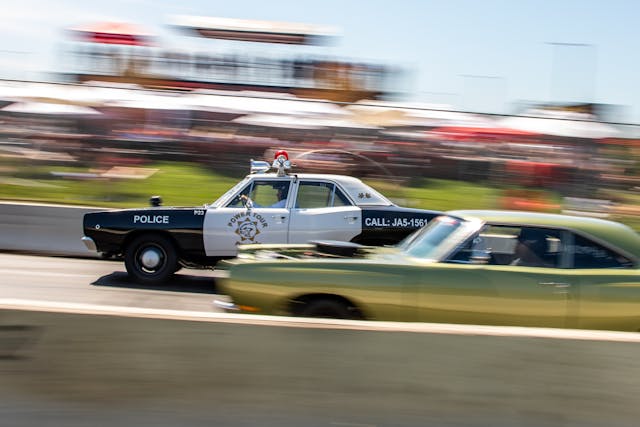
The casual atmosphere doesn’t dilute the competitive spirit, as the dozens of laptops sitting on passenger seats testify. Depending on where you stroll in the racing queue, you’ll hear some conversation—or none at all. Greg Hurlbutt, owner of a seafoam-blue ’65 Chevelle 300 with a 496 big-block Chevy under its hood, does sales and tech support for Hyperaktive Performance. The rubber-floored base model has just 39,000 miles on the odometer and wears much of its original paint and trim. “I build something that was fast, but still looked period-correct and fairly sedate—a sleeper-type vehicle,” he says. “It’s a low 10-second car that we can drive anywhere.”

An unpretentious man wearing Brooks tennis shoes and black Oakleys, Hurlbutt says that the sheer amount of data available with modern analytic software—for a price, of course—makes it hard to resist. The sport is old-school, sure, but there’s little reason to turn up your nose at the power of digital diagnostic aids. Some programs watch suspension compression and can manage squat and lift to keep the car from nosing up at launch.
“The best part about the stuff we do is the people,” Hurlbutt says. He nods toward a gold Grand Prix ahead of him in line. “I ride with him every year.” By “every year,” he means each Drag Week, where his copilot duties entail navigation and most of the grunt work—unpacking the car, setting out tools, swapping tires—so that the driver can focus on dialing in the car for each race venue.

One of most endearing builds on hand is a ’67 International Scout, painted like a Creamsicle and owned by the Shortzes, who both make their livings building gas stations. (Underground and fueling parts, not the canopies and amenities.) Arms resting on the trunk of the trucklet, with a ready, white smile and double sparkling earrings, Jo Ann casually mentions that she’s held an NHRA license and that her husband David built her a dragster. Today, however, she’s content to let her spouse sit in the driver’s seat of the Scout, whose cute face belies the all-business powertrain lurking under its hood: a 5.7-liter ethanol-huffing LS strapped with two turbos and spinning a 3.55:1 Moser rear end. Grinning, David reveals his plans to drop in a pro-mod LSX next. Six liters, 75-mm turbo. Output? 1800 to 2000 hp. More grins.

Not everything here is Detroit faithful, exactly. A ’95 Mitsubishi Eclipse GSX, slicks on all four corners, sits nose-to-tail with a black C6 Lingenfelter coupe. Its owner is Tony Niemczyk, a soft-spoken, bearded Polish engineer from Lockheed Martin who drove the all-wheel-drive coupe here from Pennsylvania. The engine bay is the total opposite of the big-displacement mills lining Woodward: The four-cylinder’s stock 122 cubic inches make even a 350 look ginormous.

How did Niemczyk get the Eclipse to be a low 9-second car? Trial and error—“this is the fifth or sixth engine in this car”—and lots of boost. A dual fuel system from Haltec supplies the mill with ethanol under boost … which, thanks to the 72-mm turbo, tops out at 44 psi. The block may be stock, but the crank and cylinder head are upgraded and “the piston and rods are basically to my spec at this point.” Though his enthusiasm is of a different stripe, Niemcyzk’s story is a familiar one out here on Woodward: His dad started street racing in his teens, and the addiction proved contagious. “He says I went to the race track when I was still in my mom’s stomach.”
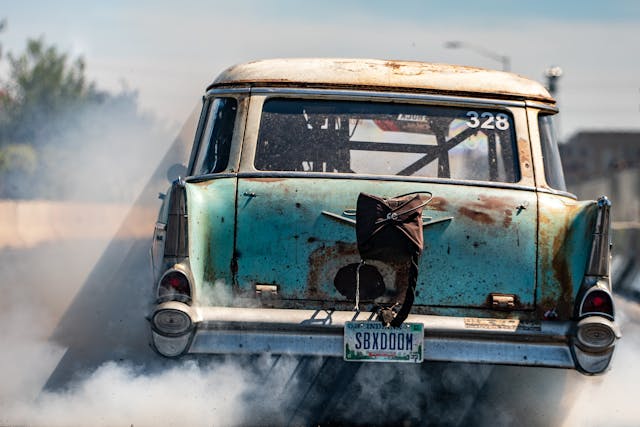
These are serious machines laying rubber at Woodward—and no regulatory motorsports body in sight. Ambulances and fire trucks are on site, naturally, and there’s a mobile Detroit police station parked at the M1 Concourse track, right beside a Dodge merch tent. Across from that is a food truck selling elephant ears and hand-dipped corndogs. For any fan of drag strips or county fairs, however, municipal emergency services and law enforcement are hardly intruding presences. The whole tire-shrieking, engine-revving event feels like suspiciously too much fun. Aren’t the adults going to arrive any second? Tell everyone to stomp out their cigarettes and smash the beer cans? “You’ll get the keys back when I say so.”
Of course, in this case, the adults are the ones putting on the whole show, an army of volunteers in black, Fratzog t-shirts wearing headsets and tennis shoes that, as the day progresses, begin to suck against the starting-line pavement.
Jason Rueckert, midwest regional manager of VP Racing Fuels, is back performing starting duties, though he’s grown a full beard since his 2019 goatee. When the really snorty big-tire machines nose up, lifting an inch or two as their tires bulge during the preparatory burnout, jerking against the brakes when Rueckert’s fingers nudges them forward against the lasers, he looks like some strange tamer of dinosaurs. Fist means stay. Both raised means hit the rev limiter. Dropped arms means go.

Like dinosaurs, Roadkill Nights has a strange ability to make you feel like a kid—even if you’re still in your 20s. Late in the afternoon, interviews done, I’m not ready to leave Pontiac. Going home without an airbrushed, blood-red HEMI “tattoo” on my shoulder and a funnel cake in my stomach suddenly seems disrespectful to the whole spirit of the event. So marked, I happily mill with the crowd, munching fried dough and dusting myself in powdered sugar.
Attendance this year is far lower than 2019’s 47,000, perhaps for obvious public health reasons, but the joy of Roadkill Nights remains intact. Cowboy boots, Lilly Pulitzer dresses, American-flag onesies, kaftans, Hollister polos, skin-tight tracksuits, even a tweed cap with goggles—Dodge throws one heck of a party, and all sorts of people turn out to savor it.
Here’s to next year. Who’s packing the cooler?

